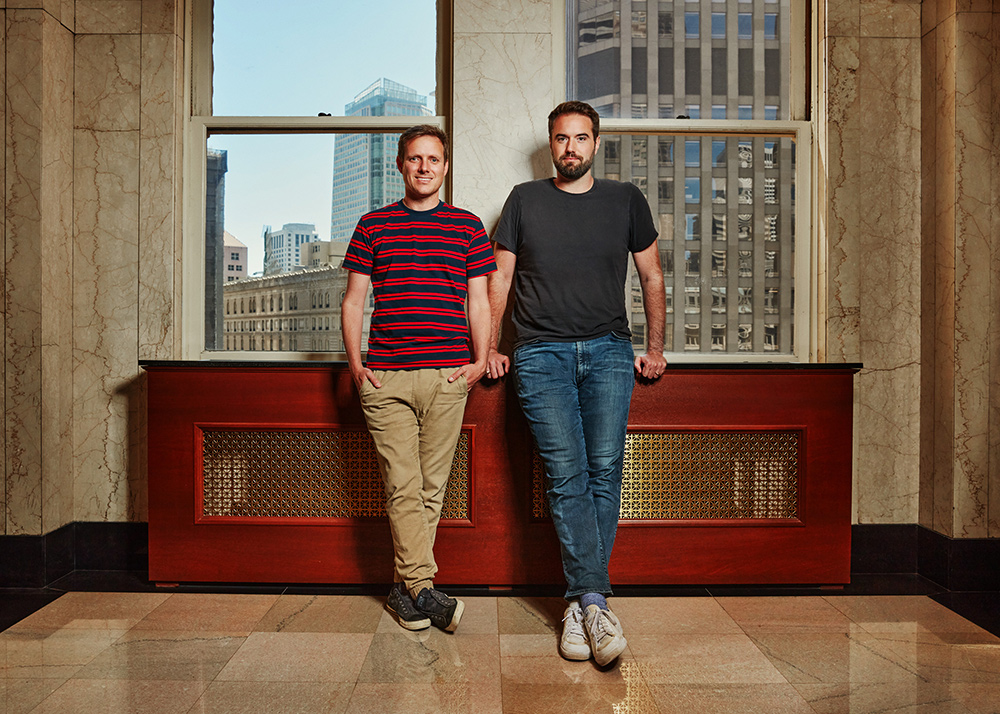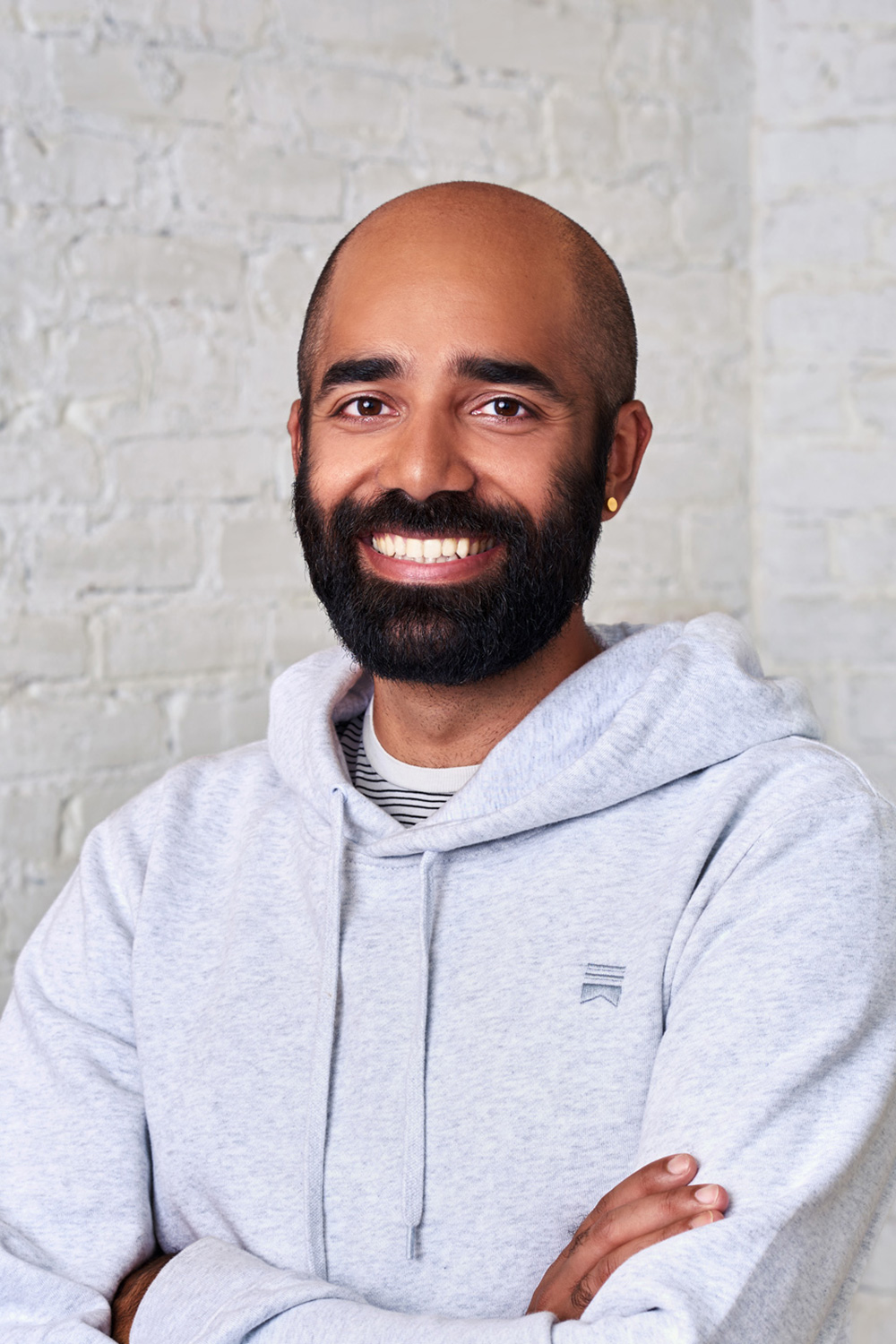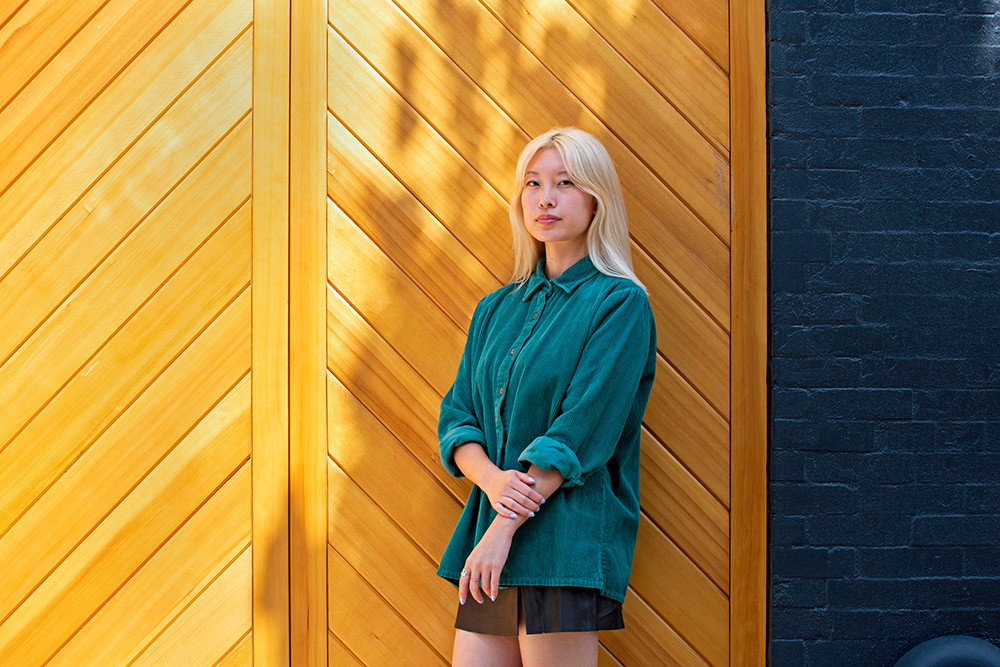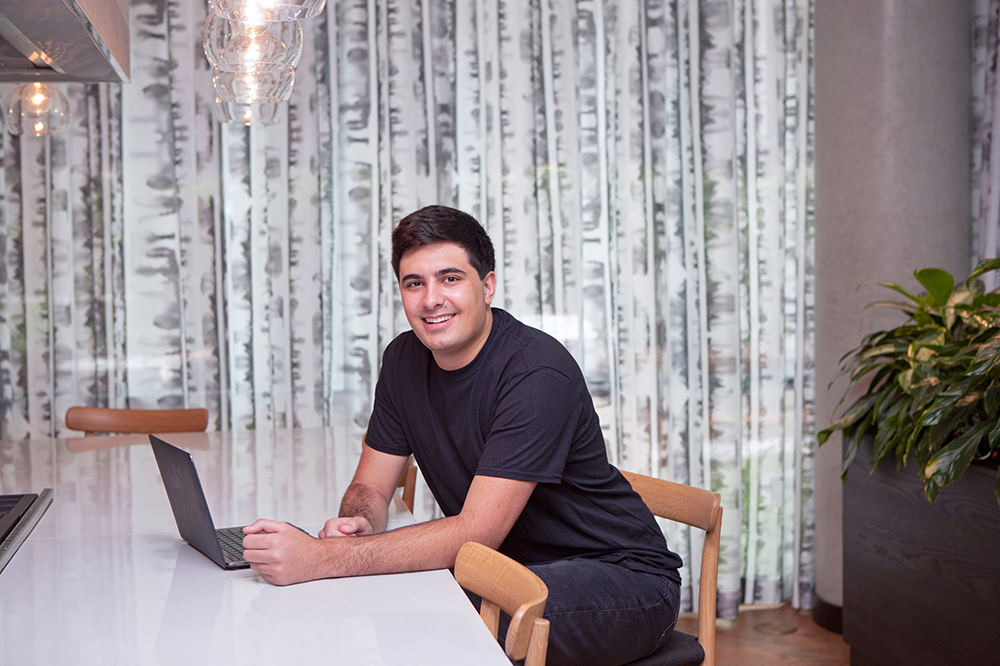去年夏天,曾供職于《紐約客》(The New Yorker)和《芝加哥論壇報(bào)》(the Chicago Tribune)、60歲的作家艾米麗·納恩住進(jìn)了北卡州阿西婭郡的一個(gè)車(chē)庫(kù)中。她原本去那是為了完成一本書(shū)作,最終卻留了下來(lái)。她說(shuō):“我進(jìn)入了歸隱模式。當(dāng)我回歸現(xiàn)實(shí)時(shí),我覺(jué)得‘自己歲數(shù)太大了,無(wú)法找到工作。’我沒(méi)有接任何自由寫(xiě)作的活。面對(duì)當(dāng)前這個(gè)全新的美食作家世界,要融入其中真的很難。我覺(jué)得,自己這回遇到了大麻煩。”
幸好這里還有沙拉。由于周邊有著眾多令人贊不絕口的農(nóng)產(chǎn)品,“如同諾曼·洛克威爾(20世紀(jì)早期的重要畫(huà)家及插畫(huà)家-譯注)畫(huà)筆下的水果、蔬菜攤位和市場(chǎng)”,納恩開(kāi)始“將桃子、李子、漿果和西紅柿等一切她喜歡的食物拌在一起,從來(lái)不去擔(dān)心食物搭配的問(wèn)題。這聽(tīng)起來(lái)非常俗套,我討厭用這個(gè)詞,應(yīng)該說(shuō)這種方法很有治愈效果。”她在Twitter上發(fā)布了自己的作品,美食作家雷根·弗雷切·史蒂芬斯以及女演員史密斯·卡梅隆鼓勵(lì)她撰寫(xiě)新聞通訊。“我當(dāng)時(shí)覺(jué)得,哈哈,很有意思。我應(yīng)該試試。”
2020年10月,她確實(shí)干起了這一行,在Substack上創(chuàng)建了《沙拉雜燴部》(The Department of Salad)專(zhuān)欄。Substack是一個(gè)線上平臺(tái),能夠讓作者進(jìn)行創(chuàng)作,并將作品直接發(fā)送給訂閱用戶(hù)。納恩很快就一鳴驚人。一開(kāi)始專(zhuān)欄文章是免費(fèi)的,到了2021年2月,她引入了一個(gè)付費(fèi)服務(wù)選項(xiàng)。到了3月底,公司注意到了這一點(diǎn),并向納恩提供了Substack Pro項(xiàng)目,其功能類(lèi)似于新書(shū)預(yù)付金:也就是預(yù)先支付一年的定額費(fèi)用,有時(shí)候是兩年,這樣,作者在發(fā)展其事業(yè)時(shí)還能繼續(xù)生活。公司還會(huì)從訂閱費(fèi)中抽成15%。當(dāng)項(xiàng)目到期后,這一比例將恢復(fù)至標(biāo)準(zhǔn)Substack合約的規(guī)定:作家將拿到近九成, Substack抽取一成,同時(shí)Stripe將獲得3%的信用卡支付結(jié)算費(fèi)。納恩最近搬到了亞特蘭大,但她并未透露其Pro合約的金額,不過(guò)她說(shuō)“公司說(shuō)的這個(gè)數(shù)字對(duì)我來(lái)說(shuō)足夠了,我感覺(jué)‘自己也沒(méi)有其他的辦法能夠在一年內(nèi)賺到這么多錢(qián)。’我有些不安,但還是接受了。”

Pro項(xiàng)目的要求并不多;納恩覺(jué)得最有壓力的要求之一是每周至少發(fā)兩篇稿件(在其新聞通訊的免費(fèi)階段,她一周只需要發(fā)一篇稿子)。不過(guò),Substack還會(huì)聘請(qǐng)一位她所挑選的編輯與其合作,并為其提供訪問(wèn)Getty Images的機(jī)會(huì)以及免費(fèi)打字服務(wù)(每月限量)。她的訂閱用戶(hù)超過(guò)了1.5萬(wàn)人,收取5.5美元的月費(fèi)或50美元的年費(fèi);Substack稱(chēng),用戶(hù)從免費(fèi)到付費(fèi)的轉(zhuǎn)換率通常在5%-10%之間。她說(shuō):“我并沒(méi)有年入百萬(wàn)美元,但收入感覺(jué)真的很穩(wěn)定,與我在《芝加哥論壇報(bào)》的薪資相當(dāng),而且我當(dāng)時(shí)并不少掙。這一點(diǎn)聽(tīng)起來(lái)依然真的很俗,但它多少讓我回歸了自己的寫(xiě)作老本行,而且我可以寫(xiě)我想寫(xiě)的東西。”
20年來(lái),媒體格局一直在瓦解和衰落,而且對(duì)于大多數(shù)老媒體公司來(lái)說(shuō),一直困擾他們的一個(gè)無(wú)解難題在于:到底是花錢(qián)購(gòu)買(mǎi)高質(zhì)量的寫(xiě)作內(nèi)容,還是購(gòu)買(mǎi)谷歌算法轉(zhuǎn)瞬即逝的點(diǎn)擊誘餌。Substack是少數(shù)幾家試圖通過(guò)將作者與其愿意付費(fèi)閱讀的讀者相連,來(lái)解決這一復(fù)雜局面的公司之一。從很多方面來(lái)看,這一舉措正在奏效:Substack擁有50多萬(wàn)名愿意為通訊作者付費(fèi)的訂閱讀者,還有數(shù)千萬(wàn)的免費(fèi)讀者。公司稱(chēng),依據(jù)常見(jiàn)類(lèi)別的收入和受眾數(shù)量排行榜,平臺(tái)上排名前十的作者每年能掙到2000萬(wàn)美元以上。
在當(dāng)前媒體環(huán)境下,如此豐厚的報(bào)酬引發(fā)了人們對(duì)通過(guò)Substack賺錢(qián)的極大興趣。然而,僅僅是因?yàn)橐恍┯嗛営脩?hù)會(huì)向一些作者的內(nèi)容付費(fèi),并不意味著所有人都能通過(guò)這個(gè)方式賺大錢(qián)(甚至以此為生計(jì))。然后,當(dāng)一家公司義無(wú)反顧地進(jìn)入風(fēng)投/科技領(lǐng)域,嘗試顛覆老派媒體格局時(shí),質(zhì)疑聲和無(wú)法避免的并發(fā)癥將接踵而至,也為獨(dú)立作者提供了在當(dāng)前這個(gè)錯(cuò)誤信息和虛假信息滿天飛的時(shí)代進(jìn)行自我創(chuàng)作的機(jī)會(huì),正因?yàn)槿绱耍谶@個(gè)領(lǐng)域找到一份擁有不俗薪資和健康福利的工作,其概率幾乎不亞于中彩票。對(duì)于很多作者來(lái)說(shuō),Substack是危險(xiǎn)水域的救命浮標(biāo);其他人認(rèn)為,他們只不過(guò)是被扔進(jìn)了深海領(lǐng)域,因?yàn)樗麄兊脟L試身兼數(shù)職,擔(dān)任自己的抄寫(xiě)員、編輯、出版商、藝術(shù)總監(jiān)和公關(guān)機(jī)器。然而,什么樣的標(biāo)準(zhǔn)才能得到幾乎所有人的認(rèn)同?Substack正在改寫(xiě)寫(xiě)作的規(guī)則。
“衰敗的”媒體
2017年,克里斯·貝斯特、哈米什·麥肯齊和杰拉吉·塞蒂共同創(chuàng)辦了Substack,他們都曾在加拿大信息發(fā)送應(yīng)用Kik共事,貝斯特亦是Kik的聯(lián)合創(chuàng)始人之一。當(dāng)時(shí),貝斯特寫(xiě)了一篇文章,并分享給了當(dāng)時(shí)作為特斯拉首席作者的科技記者麥肯齊。麥肯齊說(shuō):“這篇文章講述了當(dāng)前主流媒體衰敗的狀態(tài),因?yàn)樗蕾?lài)的激勵(lì)構(gòu)架鼓勵(lì)的是讓人們分裂的行為和內(nèi)容,而不是幫助他們開(kāi)展合作,或朝著某種真實(shí)的想法開(kāi)展工作。這篇貼文講述了一個(gè)現(xiàn)實(shí):對(duì)于社交媒體巨頭來(lái)說(shuō),這并非是能夠輕松解決的問(wèn)題,無(wú)法靠算法調(diào)整來(lái)解決。”
麥肯齊對(duì)貝斯特說(shuō),這篇文章很好,但媒體圈所有人對(duì)這個(gè)問(wèn)題都是心知肚明。何不嘗試想想解決辦法呢?
隨后又出現(xiàn)了另一篇文章,發(fā)布于新設(shè)想的平臺(tái)Substack。麥肯齊說(shuō):“它有點(diǎn)類(lèi)似于我們的宣言,為如何打造這個(gè)美好的世界指明了方向。在這個(gè)世界中,作者們可以通過(guò)真正實(shí)現(xiàn)互聯(lián)網(wǎng)的力量,即幫助作者和讀者直接互連來(lái)改變激勵(lì)構(gòu)架,而不是受制于注意力經(jīng)濟(jì)的惡意力量,來(lái)不斷發(fā)展壯大。解決方法必然是讀者給他們信任的作者付費(fèi),而且不僅僅是稿費(fèi),同時(shí)還有訂閱費(fèi)用,因?yàn)橛嗛啚樽髡咛峁┝艘环N可持續(xù)、源源不斷的收入來(lái)源。”
當(dāng)然,Substack(“訂閱+堆棧”,因?yàn)樗且粋€(gè)包羅萬(wàn)象的堆棧,包含了人們需要的一切內(nèi)容)并沒(méi)有推出訂閱模式,也沒(méi)有打造老掉牙的通訊欄目(在采訪中,麥肯齊和公司的其他人認(rèn)為,他們更喜歡“刊物”而不是“通訊”),但該公司確實(shí)讓傳統(tǒng)媒體陷入了一絲慌亂。傳統(tǒng)媒體本來(lái)就已經(jīng)因?yàn)閺V告模式的終結(jié)以及充斥當(dāng)?shù)睾蛧?guó)際新聞的裁員而叫苦不迭,同時(shí)也面臨著發(fā)行量下降、廣泛的錯(cuò)誤信息以及陰謀論活動(dòng),以及記者隊(duì)伍持續(xù)、大量的衰退。對(duì)于作者來(lái)說(shuō),Substack有一項(xiàng)內(nèi)容非常吸引人:擁有自身內(nèi)容的版權(quán)以及關(guān)系網(wǎng),而且在決定離開(kāi)公司時(shí)你可以帶走一切。
很明顯,這種模式對(duì)讀者也有好處。最受歡迎的Substack作者包括波士頓大學(xué)歷史學(xué)教授希瑟·科克斯·理查德森,專(zhuān)欄《來(lái)自于一名美國(guó)人的信件》( Letters From an American);威利·吳,專(zhuān)欄《比特幣走向預(yù)測(cè)》(The Bitcoin Forecast);以及作者兼調(diào)查記者馬特·泰比,專(zhuān)欄《TK新聞》(TK News)。其他頂級(jí)作者(排名經(jīng)常變化)包括亨特·哈里斯、安德魯·蘇利文、賈德·勒格姆、巴里·韋斯、邁克爾·摩爾、凱西·牛頓和萊尼·拉奇斯基。高調(diào)的Substack Pro合約之間也存在著巨大的金額差距,例如前Vox撰稿人馬修·伊格萊西亞斯新聞通訊《緩慢的無(wú)聊》(Slow Boring)合約(25萬(wàn)美元外加15%的訂閱費(fèi)收入;作者說(shuō),如果沒(méi)有Pro合約的話會(huì)賺的更多)。薩爾曼·魯什迪在9月公布了自己的Pro合約,他向《紐約時(shí)報(bào)》(the New York Times)透露,其金額要遠(yuǎn)低于賣(mài)書(shū)的收入,他只是想“嘗試下從未做過(guò)的事情。”對(duì)于那些并非伊格萊西亞斯和魯什迪這類(lèi)名人的作者,麥肯齊說(shuō):“在我看來(lái),有不少人的收入還算可以。”
Substack的首席技術(shù)官杰拉吉·塞蒂還記得,一開(kāi)始,這家企業(yè)的經(jīng)營(yíng)模式非常簡(jiǎn)單,這三位聯(lián)合創(chuàng)始人圍坐在貝斯特公寓的桌子旁。他說(shuō):“有一張經(jīng)典的照片記錄了我們完成首輪融資的情景:大家都光著腳聚在一起,還有克里斯的狗凱西。這種狀況持續(xù)了大概一整年。”公司成立之時(shí)將比爾·畢夏普的作品《中國(guó)主義》(Sinocism)作為首刊,很快便賺到了錢(qián)。這是一部關(guān)于中國(guó)的通訊,已經(jīng)寫(xiě)了5年,一直處于免費(fèi)狀態(tài)。麥肯齊說(shuō),他們?cè)究梢詫⑵浯蛟鞛橐豁?xiàng)“新潮業(yè)務(wù)”,而且無(wú)需為此籌資,但在2017年,The Toast創(chuàng)始人丹尼·拉弗瑞開(kāi)始撰寫(xiě)通訊《The Shatner Chatner》(如今更名為《The Chatner》)。拉弗瑞的讀者群與畢夏普的迥然不同,這一點(diǎn)讓這些創(chuàng)始人感到萬(wàn)分詫異,因?yàn)楫呄钠盏淖x者可以用企業(yè)信用卡來(lái)支付訂閱費(fèi),并將其當(dāng)做工作開(kāi)支。麥肯齊說(shuō),“丹尼的受眾就像是中西部地區(qū)的圖書(shū)館管理員,自己掏腰包支付每月5美元或每年50美元的費(fèi)用。由于這些使用案例完全沒(méi)有可比性,我們覺(jué)得,這一現(xiàn)象真的可能是特例。”(拉弗瑞的Pro合約已經(jīng)得到了廣泛公開(kāi),兩年43萬(wàn)美元。)

這幾位創(chuàng)始人申請(qǐng)了初創(chuàng)加速器Y Combinator,并獲得了通過(guò),隨后籌集到了8250萬(wàn)美元。傳播副總裁梅瑟維·程稱(chēng),在2021年完成了風(fēng)投公司安德森·霍洛維茨 (Andreessen Horowitz)領(lǐng)投的B輪融資之后,Substack當(dāng)前的估值達(dá)到了6.5億美元,其員工數(shù)從去年這個(gè)時(shí)候的15名增至75名,“而且每周都在增長(zhǎng)”。 梅瑟維還指出,其中有20名員工屬于合作者,他們?yōu)樽髡咛峁┲С郑椭浣M建社群。公司在舊金山的新總部正處于建設(shè)當(dāng)中。他們已經(jīng)招募了一批知名作家,引入了網(wǎng)播功能,并決定“押注漫畫(huà)作者”,同時(shí)還為作者創(chuàng)建了法律保護(hù)計(jì)劃。公司設(shè)立了Substack成長(zhǎng)計(jì)劃,手把手地教授創(chuàng)作者們?nèi)绾伟l(fā)展其受眾群;公司還創(chuàng)建了助學(xué)金和撥款項(xiàng)目,告訴作者如何從零做起;公司還設(shè)立了“Substack Local”這個(gè)“100萬(wàn)美元的動(dòng)議,通過(guò)幫助獨(dú)立作者以訂閱的方式,打造當(dāng)?shù)匦侣効铮瑥亩囵B(yǎng)和開(kāi)發(fā)當(dāng)?shù)匦侣勆鷳B(tài)系統(tǒng)”。10月1日,公司宣布了“留任作者”計(jì)劃,以發(fā)現(xiàn)那些正在打造其自有Substack內(nèi)容的創(chuàng)作者,并允許讀者和作者群體在這一過(guò)程中分享其洞見(jiàn)。在過(guò)去的5個(gè)月中,公司還收購(gòu)了三家公司:制定社群打造策略的People & Co.、公眾通信初創(chuàng)企業(yè)Letter以及最近的Cocoon團(tuán)隊(duì),Cocoon是一家訂閱模式的社交網(wǎng)絡(luò)公司,將繼續(xù)保持獨(dú)立營(yíng)。

盡管公司還制定了其他很多計(jì)劃,但其背后的理念十分簡(jiǎn)單:為作者掃清障礙,讓他們無(wú)需為“會(huì)計(jì)、網(wǎng)站建設(shè)和設(shè)計(jì)標(biāo)志以及所有費(fèi)神、消耗創(chuàng)作力的事情操心”,梅瑟維說(shuō)道,但也明確表示,并非所有的Pro合約都包含財(cái)務(wù)擔(dān)保條款。“我們耗費(fèi)了更多的精力來(lái)打造我們所提供的服務(wù)。之所以能有魔法般的效果,是因?yàn)槲覀冇邢嚓P(guān)的技術(shù),技術(shù)支持,針對(duì)讀者的客戶(hù)支持,還有編輯和醫(yī)療保險(xiǎn)等服務(wù)(公司會(huì)為平臺(tái)上一些尤為活躍的作者提供這方面的補(bǔ)助),以及法律保護(hù)和制作。此外,公司還有作者群體。作者只需要專(zhuān)注于寫(xiě)作,并提供高質(zhì)量的作品。”
團(tuán)隊(duì)希望,作者的入住將帶動(dòng)整個(gè)出版經(jīng)濟(jì)的發(fā)展,因?yàn)樽髡撸ǘ矣袝r(shí)候是Substack)會(huì)聘請(qǐng)編輯、設(shè)計(jì)師、營(yíng)銷(xiāo)人員、制作者和出版商幫助打造其已完成的作品。事實(shí)上,這一現(xiàn)象正在發(fā)生。在1月,作家羅克珊·蓋伊在Substack上推出了專(zhuān)欄《大言不慚》(The Audacity),她在這平臺(tái)上發(fā)布新貴作者的文章(并向其付費(fèi)),同時(shí)也會(huì)舉辦讀書(shū)俱樂(lè)部。經(jīng)營(yíng)Popular Information的ThinkProgress創(chuàng)始人賈德·勒格姆有一個(gè)兩人團(tuán)隊(duì)(一名作者,一名研究員)。前Buzzfeed作者安妮·海倫·彼得森(撰寫(xiě)《文化調(diào)查》,擁有5.6萬(wàn)名訂閱用戶(hù))會(huì)向特約撰稿人支付500美元/篇的報(bào)酬,同時(shí)還聘請(qǐng)了插畫(huà)設(shè)計(jì)師和專(zhuān)欄作家。
梅瑟維說(shuō):“除了通訊作者之外,這些人都是出版經(jīng)濟(jì)的一部分,依靠這些直接聘用關(guān)系來(lái)賺錢(qián)。他們就像是一個(gè)實(shí)體公司。有點(diǎn)類(lèi)似于文藝復(fù)興,很多人都可以通過(guò)寫(xiě)作來(lái)過(guò)上好日子。我們的確看到了一條能夠讓公司盈利的康莊大道,而且不僅僅是賺錢(qián),同時(shí)還能打造一項(xiàng)真正有著重要意義的業(yè)務(wù)。我們希望繼續(xù)打造這個(gè)充滿了活力的生態(tài)系統(tǒng)。”
反彈
雖然Substack誕生未久,但由于其特點(diǎn)正對(duì)作者和讀者群體的胃口,因此能夠迅速收獲如此巨大的媒體影響力倒也不足為奇。從《大西洋月刊》(The Atlantic)到《紐約客》,再到《紐約時(shí)報(bào)》,各大媒體對(duì)該平臺(tái)議論頗多,有人將其描述為“對(duì)民主的潛在威脅”,也有人說(shuō)“該平臺(tái)令人不安”,有人稱(chēng)其為“騙局”,也有人對(duì)該平臺(tái)大加申斥,指責(zé)其在與錯(cuò)誤信息和仇恨言論的斗爭(zhēng)中未能表明立場(chǎng),有人對(duì)其究竟是“平臺(tái)”還是“出版物”以及應(yīng)當(dāng)承擔(dān)何種責(zé)任提出了質(zhì)疑,有人對(duì)其“平臺(tái)化運(yùn)營(yíng)”、與反跨性別或觀點(diǎn)偏執(zhí)的人士簽定Pro合約的做法提出批評(píng)。受今年三月反彈事件的影響,許多知名作者已退出該平臺(tái),時(shí)至今日,相關(guān)問(wèn)題仍未得到完全澄清。
Substack向來(lái)以?xún)?nèi)容審核寬松聞名,僅對(duì)騷擾、暴力威脅、人肉搜索和色情相關(guān)內(nèi)容的發(fā)布作出了禁止,用麥肯齊的話說(shuō),平臺(tái)一貫“堅(jiān)決支持新聞自由,審查方面則以不干涉為原則”。梅瑟維表示:“當(dāng)前,我們并未制訂有關(guān)信息是否存在誤導(dǎo)的判定標(biāo)準(zhǔn)。我們并不認(rèn)為自己可以在互聯(lián)網(wǎng)上扮演裁判的角色,去判斷信息的真?zhèn)危膊徽J(rèn)為自己可以對(duì)他人行為是否正確加以審查。但我們絕不會(huì)獎(jiǎng)勵(lì)因憤怒而訴諸暴力的行徑,在這方面我們非常堅(jiān)決。”
從直覺(jué)上看,該公司的創(chuàng)始人或?qū)⒚媾R很大壓力,被迫驅(qū)逐部分最具爭(zhēng)議的作者(這些人可能也沒(méi)有簽定Pro合約)。Substack將是否公開(kāi)相關(guān)合作的權(quán)利交給了撰稿人,不過(guò)這種做法也帶來(lái)了一些困惑。無(wú)論如何,這些作者畢竟為Substack賺到了很多錢(qián)。麥肯齊表示,就Pro合約而言,“對(duì)我們來(lái)說(shuō),最重要的是我們不會(huì)謀求獲得文章的所有權(quán)。整個(gè)合作更像是銀行對(duì)貸款質(zhì)量進(jìn)行評(píng)估,而非出版商試圖將自己的作品推向世界。”
除了肯定會(huì)有很多品行不端之人能夠拿到銀行貸款之外,還有一個(gè)涉及面更廣的問(wèn)題,那就是,在這個(gè)日益政治化的時(shí)代,該平臺(tái)能否真正對(duì)政治事務(wù)保持懷疑態(tài)度,從道德上來(lái)說(shuō),企業(yè)也有義務(wù)對(duì)此劃定界限。拉斯蒂·福斯特近來(lái)一直在網(wǎng)絡(luò)上公開(kāi)批評(píng)Substack的創(chuàng)始人,福斯特認(rèn)為,Substack應(yīng)在被資助人名單方面做到更加公開(kāi)透明。雖然近來(lái)這方面的情況有所好轉(zhuǎn),但問(wèn)題仍未完全解決。他表示:“格雷厄姆·萊因漢(因發(fā)表恐跨性別言論在Twitter遭禁)不應(yīng)出現(xiàn)在這個(gè)平臺(tái)之上,把他驅(qū)逐出去對(duì)平臺(tái)不會(huì)有任何壞處”。2013年底至2016年,拉斯蒂·福斯特在TinyLetter網(wǎng)站上撰寫(xiě)的《Today in Tabs》曾風(fēng)靡一時(shí), 2020年該專(zhuān)欄在Substack重新上線后已獲得25,000名訂閱用戶(hù)。
當(dāng)然,離開(kāi)也未嘗不是一種選擇。今年6月,F(xiàn)acebook發(fā)布了自己旗下的自由撰稿人平臺(tái)——Bulletin,Twitter旗下也有自營(yíng)通訊專(zhuān)欄服務(wù)——Revue。彼得森說(shuō):“(市場(chǎng)上)還有很多其他選擇。我覺(jué)得我們對(duì)平臺(tái)說(shuō)不上有什么品牌忠誠(chéng)度,這是一種積極現(xiàn)象。”10月1日,氣象學(xué)家兼氣候記者埃里克·霍特豪斯向其近50萬(wàn)Twitter粉絲宣布:“我與Substack的合同已于昨日到期。今天,我將正式離開(kāi)該平臺(tái)。Substack拒絕對(duì)其平臺(tái)上有關(guān)性別、新冠和氣候的有害言論加以管控。我認(rèn)為,當(dāng)既有問(wèn)題不斷侵蝕我們的生活時(shí),我們不應(yīng)選擇默然接受。”不過(guò)雖然有人選擇離開(kāi)Substack,加入Ghost、Buttondown或者甚至Medium,但想要加入或者留在Substack的人似乎更多。福斯特說(shuō):“如果能走的話我可能早就走了,不過(guò)其他平臺(tái)也都有我不能接受的問(wèn)題。”
一個(gè)人的戰(zhàn)斗
從新聞學(xué)院畢業(yè)后,28歲的迪莉婭·蔡獲得了大西洋傳媒(Atlantic Media)的研究員職位,從事戰(zhàn)略研究工作,主要負(fù)責(zé)跟進(jìn)媒體趨勢(shì)及“閱讀大量有關(guān)尼曼實(shí)驗(yàn)室(Nieman Lab)的文章”。因?yàn)橄胝覀€(gè)地方分享自己的觀點(diǎn),她從2016年開(kāi)始在TinyLetter上撰寫(xiě)專(zhuān)欄,并于2018年將自己的專(zhuān)欄搬到了Substack上。從2020年6月到2021年6月,盡管迪莉婭從未對(duì)Deez Links(每周記錄媒體及相關(guān)行業(yè)發(fā)生的新鮮事)收取費(fèi)用,但她還是通過(guò)在該欄目運(yùn)營(yíng)媒體分類(lèi)廣告賺到了2萬(wàn)美元。(Substack的創(chuàng)始人可能不喜歡廣告這種商業(yè)模式,但沒(méi)人規(guī)定撰稿人不能通過(guò)廣告賺錢(qián)。)
今年夏天,看到Substack一波接一波地發(fā)布Pro簽約公告,迪莉婭懷疑自己是不是錯(cuò)過(guò)了大好機(jī)遇。“我覺(jué)得自己有點(diǎn)像個(gè)傻瓜,因?yàn)榭駸岬摹越馃帷坪跽谏涎荨R苍S我真的可以像其他作者一樣,走出去為自己打拼一下。不過(guò)我并沒(méi)有幻想過(guò)為自己工作,過(guò)那種整天待在家里碼字的生活。我喜歡在公司上班,也很享受和同事一塊工作的感覺(jué),我還有很多要學(xué)的東西。一直以來(lái),我只是希望通過(guò)這個(gè)欄目找到一份很有意思的編輯工作。”迪莉婭也確實(shí)通過(guò)撰寫(xiě)通訊實(shí)現(xiàn)了自己的心愿,如今,她已經(jīng)成為《名利場(chǎng)》(Vanity Fair)的撰稿人,在通過(guò)Deez Links透露其正在撰寫(xiě)《中心地帶》(Central Places)后,最近這本小說(shuō)也已成功賣(mài)出。
今年7月初,迪莉婭停更了自己擁有近11500名訂閱用戶(hù)的通訊專(zhuān)欄,但新的訂閱者還在繼續(xù)涌入。最近一個(gè)周日,她發(fā)現(xiàn)自己忽然又有了繼續(xù)更新下去的想法。迪莉婭說(shuō):“你知道,這種寫(xiě)作感覺(jué)頗為不同。我肯定不能像從事這份工作之前那樣頻繁地更新這個(gè)專(zhuān)欄,不過(guò)我也非常清楚,這里的每一位訂閱用戶(hù)都是我個(gè)人的讀者,因而極具價(jià)值。為了做到完全透明,我正努力在明年秋天再出一本書(shū)。”

迪莉婭認(rèn)為,Substack和其他通訊專(zhuān)欄平臺(tái)共同的優(yōu)點(diǎn)在于,它能讓讀者獲得成為某人主顧、進(jìn)入其思想核心圈的那種滿足感。讀者甚至可以直接跟作者辯論。但我們的腦子里能同時(shí)容納多少種聲音呢?或者說(shuō)我們的收件箱里能容納多少封時(shí)事通訊?信用卡又能支付起多少費(fèi)用呢?最近有位朋友跟我抱怨說(shuō),為了支持其他朋友,她的訂閱已經(jīng)讓自己不堪重負(fù)。她不僅沒(méi)時(shí)間讀完自己訂閱的內(nèi)容,連訂閱費(fèi)也已經(jīng)付不起了。但她又擔(dān)心自己一旦取消訂閱又會(huì)被朋友們發(fā)現(xiàn)。最后,她還是取消了一些訂閱服務(wù),并寫(xiě)信對(duì)個(gè)中緣由做出了解釋。她想:“如果我們繼續(xù)這么做,難道我們要把自己從Substack賺的所有錢(qián)都拿去支持Substack上的其他作者么?”(10%的訂閱費(fèi)會(huì)直接進(jìn)入Substack的賬戶(hù)。)
迪莉婭說(shuō):“藝術(shù)和金錢(qián)的聯(lián)系空前緊密。從某些方面來(lái)說(shuō),這種感覺(jué)非常美妙,因?yàn)橹С帜愕娜苏悄愕淖x者,但這也會(huì)讓你產(chǎn)生一種做交易的感覺(jué)。只有你自己在為自己作品的價(jià)值背書(shū)。可能這也是我不愿全職做這項(xiàng)工作的原因所在。我感覺(jué)自己真的做不到‘王婆賣(mài)瓜,自賣(mài)自夸’。”
淘金熱
23歲的埃德溫·多爾西已經(jīng)賺了大錢(qián)。作為一名斯坦福大學(xué)的學(xué)生,他在大四快結(jié)束時(shí)開(kāi)始在Substack上寫(xiě)作。他說(shuō):“我從幼時(shí)就對(duì)股票充滿熱情,大四學(xué)期末,我一直在找工作。面試了很多家公司,但是都沒(méi)有找到自己心儀的崗位”。受《請(qǐng)?jiān)笗?shū)》(Petition)(該文聚焦“顛覆始于被顛覆者的優(yōu)勢(shì)”)等發(fā)表于Substack的文章啟發(fā),他從2020年2月開(kāi)始撰寫(xiě)自己的專(zhuān)欄,并將其命名為“熊洞”(The Bear Cave)。他解釋道:“那時(shí),我每周都會(huì)發(fā)出免費(fèi)的通訊郵件,分享做空信息、企業(yè)近期不端行徑以及SEC可能發(fā)起哪些調(diào)查等內(nèi)容。”同年9月,他搬出了父母的房子,來(lái)到紐約,開(kāi)始收取每月34美元(或每年340美元)的“深度調(diào)查”費(fèi)用,并對(duì)那些具有誤導(dǎo)性或傷害客戶(hù)的企業(yè)進(jìn)行曝光。開(kāi)始收費(fèi)一周之后,他的年度經(jīng)常性收入便達(dá)到了6萬(wàn)美元,兩個(gè)月后,又進(jìn)一步提升到了10萬(wàn)美元。這時(shí),Substack聯(lián)系了他,除了祝賀他的快速成長(zhǎng),也向他詢(xún)問(wèn)了成功的秘訣。
開(kāi)始收費(fèi)9個(gè)月后,多爾西的年收入達(dá)到了33萬(wàn)美元,在Substack扣除10%傭金、信用卡扣除3%手續(xù)費(fèi)后,大約到手29萬(wàn)美元。他說(shuō),訂閱用戶(hù)增長(zhǎng)較快時(shí),一個(gè)月就可以增長(zhǎng)20%左右。“老實(shí)說(shuō),這是大家夢(mèng)寐以求的工作,對(duì)年輕人來(lái)說(shuō)更是如此。因?yàn)槲铱梢运瘧杏X(jué),可以自己選擇工作時(shí)間。如果算核心詞的話,那么我每個(gè)詞都能賺15美元,這簡(jiǎn)直是天方夜譚。”

而要達(dá)成如此傲人的成績(jī),就少不了Substack Grow之類(lèi)項(xiàng)目的幫助。最近一個(gè)星期三,188名申請(qǐng)者獲準(zhǔn)參加“獨(dú)立撰稿人速成班”,了解如何打造忠實(shí)讀者群、啟動(dòng)付費(fèi)訂閱項(xiàng)目,他們通過(guò)Zoom會(huì)議了解了成為Substack上成功撰稿人所應(yīng)具備的基本知識(shí)”。參與者被要求參加一場(chǎng)線上對(duì)話,分享自己個(gè)人成長(zhǎng)中的重要時(shí)刻。活動(dòng)中,主辦方宣布舉辦“協(xié)助編輯”抽獎(jiǎng)活動(dòng)。此后,《前1000名客戶(hù)》(First 1000,介紹了創(chuàng)始人如何獲得自己的前1000名客戶(hù))的作者阿里·阿布拉塔分享了自己對(duì)如何在Substack上獲取訂閱用戶(hù)的建議。188名滿懷憧憬的參與者觀看了本次直播,并認(rèn)真記了筆記。
在尋找Substack不足之處的過(guò)程中,我們發(fā)現(xiàn):為人們提供指導(dǎo),引導(dǎo)其擴(kuò)充訂閱用戶(hù)(只要達(dá)到建議與專(zhuān)業(yè)服務(wù)之間的某個(gè)甜蜜點(diǎn)即可)比將其培養(yǎng)成更優(yōu)秀的作者要容易得多。Substack的模式屢遭批評(píng),有些頂級(jí)作家在來(lái)到Substack的平臺(tái)前已擁有多年經(jīng)驗(yàn),且擁有成熟的付費(fèi)讀者群體,有些則只是聽(tīng)說(shuō)了Substack的存在后想過(guò)來(lái)試試手。(結(jié)果后者可能一年也能賺到30萬(wàn)美元。)
“大多數(shù)人都在苦苦掙扎,”烏里·布拉姆如是說(shuō)。在發(fā)現(xiàn)非營(yíng)利性的開(kāi)源平臺(tái)——Ghost的經(jīng)濟(jì)性更好、適應(yīng)性更強(qiáng)之后,他將自己經(jīng)營(yíng)了12年之久、擁有超過(guò)74,000名讀者的通訊欄目《瀏覽》(Browser)從Substack搬到了Ghost上。布拉姆說(shuō):“我認(rèn)為,即便只是使用默認(rèn)設(shè)置,甚至在還沒(méi)完全適應(yīng)時(shí),Ghost也比Substack好用。”他認(rèn)為,Substack的成功故事有些言過(guò)其實(shí)。“大多數(shù)通訊專(zhuān)欄做得都不好。他們的讀者較少,想要實(shí)現(xiàn)增長(zhǎng)也很難。即便歷經(jīng)千辛萬(wàn)苦、做出種種嘗試之后,可能還是行不通。(之所以很少聽(tīng)到這種聲音,)只是因?yàn)槟切┳龅貌缓玫娜丝赡懿粫?huì)大肆聲張而已,誰(shuí)會(huì)到處說(shuō):‘我每天都泡在Substack上,結(jié)果我的專(zhuān)欄每月才只能賺到600美元’?這還不算退出費(fèi)用,如果你想退出Substack,就得給所有訂閱用戶(hù)退錢(qián),這筆費(fèi)用可能相當(dāng)于你半年的收入。”
安妮·特魯貝克是獨(dú)立出版社Belt Publishing的創(chuàng)始人兼出版商,她經(jīng)營(yíng)的Substack專(zhuān)欄名為“小出版社筆記”(Notes From a Small Press),收入約2500美元。她有大約3000名訂閱用戶(hù),其中大約10%為付費(fèi)用戶(hù)。不過(guò)因?yàn)檫@個(gè)專(zhuān)欄對(duì)她來(lái)說(shuō)只是副業(yè),所以其規(guī)模和額外帶來(lái)的收益對(duì)她而言都可以接受。令她感興趣的是,人們確實(shí)會(huì)付錢(qián),她也很想知道這種新生事物會(huì)對(duì)整個(gè)出版界產(chǎn)生何種影響。相較于Substack的興起對(duì)整個(gè)經(jīng)濟(jì)的影響,該平臺(tái)能否持續(xù)或許并沒(méi)有那么重要。她說(shuō):“我認(rèn)為,有些地方肯定在考慮自己的收費(fèi)標(biāo)準(zhǔn)和人員配備,因?yàn)樽髡哒诹魇АH魏卧黾幼髡呤杖氲淖龇ǘ紩?huì)產(chǎn)生深遠(yuǎn)影響。我認(rèn)為,這將帶來(lái)一些其它的想法,我們將會(huì)看到事情將如何發(fā)展。”
迪莉婭表示:“這種向訂閱模式的轉(zhuǎn)型是一種積極變化,對(duì)新聞行業(yè)而言,過(guò)去,廣告商永遠(yuǎn)是那么高高在上,而現(xiàn)在無(wú)論是在二者之間進(jìn)行選擇,還是找到合適的組合,都是一件大大的好事。”但她確實(shí)也對(duì)當(dāng)前通訊專(zhuān)欄熱潮中的暴富元素感到疑惑。她說(shuō):“首先,如果你想賺錢(qián),肯定要花很長(zhǎng)時(shí)間。其次,除了金錢(qián)以外,做這件事的理由還有很多。”
彼得森對(duì)此表示贊同。她說(shuō):“我做這件事從來(lái)都不是為了賺大錢(qián)。這個(gè)行業(yè)變化無(wú)常,對(duì)此我們非常清楚。我只是想獲得一些對(duì)自己未來(lái)的掌控,讓自己有那么一會(huì)兒可以不用糾結(jié)。這種感覺(jué)很棒。”(財(cái)富中文網(wǎng))
譯者:梁宇
審校:夏林
去年夏天,曾供職于《紐約客》(The New Yorker)和《芝加哥論壇報(bào)》(the Chicago Tribune)、60歲的作家艾米麗·納恩住進(jìn)了北卡州阿西婭郡的一個(gè)車(chē)庫(kù)中。她原本去那是為了完成一本書(shū)作,最終卻留了下來(lái)。她說(shuō):“我進(jìn)入了歸隱模式。當(dāng)我回歸現(xiàn)實(shí)時(shí),我覺(jué)得‘自己歲數(shù)太大了,無(wú)法找到工作。’我沒(méi)有接任何自由寫(xiě)作的活。面對(duì)當(dāng)前這個(gè)全新的美食作家世界,要融入其中真的很難。我覺(jué)得,自己這回遇到了大麻煩。”
幸好這里還有沙拉。由于周邊有著眾多令人贊不絕口的農(nóng)產(chǎn)品,“如同諾曼·洛克威爾(20世紀(jì)早期的重要畫(huà)家及插畫(huà)家-譯注)畫(huà)筆下的水果、蔬菜攤位和市場(chǎng)”,納恩開(kāi)始“將桃子、李子、漿果和西紅柿等一切她喜歡的食物拌在一起,從來(lái)不去擔(dān)心食物搭配的問(wèn)題。這聽(tīng)起來(lái)非常俗套,我討厭用這個(gè)詞,應(yīng)該說(shuō)這種方法很有治愈效果。”她在Twitter上發(fā)布了自己的作品,美食作家雷根·弗雷切·史蒂芬斯以及女演員史密斯·卡梅隆鼓勵(lì)她撰寫(xiě)新聞通訊。“我當(dāng)時(shí)覺(jué)得,哈哈,很有意思。我應(yīng)該試試。”
2020年10月,她確實(shí)干起了這一行,在Substack上創(chuàng)建了《沙拉雜燴部》(The Department of Salad)專(zhuān)欄。Substack是一個(gè)線上平臺(tái),能夠讓作者進(jìn)行創(chuàng)作,并將作品直接發(fā)送給訂閱用戶(hù)。納恩很快就一鳴驚人。一開(kāi)始專(zhuān)欄文章是免費(fèi)的,到了2021年2月,她引入了一個(gè)付費(fèi)服務(wù)選項(xiàng)。到了3月底,公司注意到了這一點(diǎn),并向納恩提供了Substack Pro項(xiàng)目,其功能類(lèi)似于新書(shū)預(yù)付金:也就是預(yù)先支付一年的定額費(fèi)用,有時(shí)候是兩年,這樣,作者在發(fā)展其事業(yè)時(shí)還能繼續(xù)生活。公司還會(huì)從訂閱費(fèi)中抽成15%。當(dāng)項(xiàng)目到期后,這一比例將恢復(fù)至標(biāo)準(zhǔn)Substack合約的規(guī)定:作家將拿到近九成, Substack抽取一成,同時(shí)Stripe將獲得3%的信用卡支付結(jié)算費(fèi)。納恩最近搬到了亞特蘭大,但她并未透露其Pro合約的金額,不過(guò)她說(shuō)“公司說(shuō)的這個(gè)數(shù)字對(duì)我來(lái)說(shuō)足夠了,我感覺(jué)‘自己也沒(méi)有其他的辦法能夠在一年內(nèi)賺到這么多錢(qián)。’我有些不安,但還是接受了。”
Pro項(xiàng)目的要求并不多;納恩覺(jué)得最有壓力的要求之一是每周至少發(fā)兩篇稿件(在其新聞通訊的免費(fèi)階段,她一周只需要發(fā)一篇稿子)。不過(guò),Substack還會(huì)聘請(qǐng)一位她所挑選的編輯與其合作,并為其提供訪問(wèn)Getty Images的機(jī)會(huì)以及免費(fèi)打字服務(wù)(每月限量)。她的訂閱用戶(hù)超過(guò)了1.5萬(wàn)人,收取5.5美元的月費(fèi)或50美元的年費(fèi);Substack稱(chēng),用戶(hù)從免費(fèi)到付費(fèi)的轉(zhuǎn)換率通常在5%-10%之間。她說(shuō):“我并沒(méi)有年入百萬(wàn)美元,但收入感覺(jué)真的很穩(wěn)定,與我在《芝加哥論壇報(bào)》的薪資相當(dāng),而且我當(dāng)時(shí)并不少掙。這一點(diǎn)聽(tīng)起來(lái)依然真的很俗,但它多少讓我回歸了自己的寫(xiě)作老本行,而且我可以寫(xiě)我想寫(xiě)的東西。”
20年來(lái),媒體格局一直在瓦解和衰落,而且對(duì)于大多數(shù)老媒體公司來(lái)說(shuō),一直困擾他們的一個(gè)無(wú)解難題在于:到底是花錢(qián)購(gòu)買(mǎi)高質(zhì)量的寫(xiě)作內(nèi)容,還是購(gòu)買(mǎi)谷歌算法轉(zhuǎn)瞬即逝的點(diǎn)擊誘餌。Substack是少數(shù)幾家試圖通過(guò)將作者與其愿意付費(fèi)閱讀的讀者相連,來(lái)解決這一復(fù)雜局面的公司之一。從很多方面來(lái)看,這一舉措正在奏效:Substack擁有50多萬(wàn)名愿意為通訊作者付費(fèi)的訂閱讀者,還有數(shù)千萬(wàn)的免費(fèi)讀者。公司稱(chēng),依據(jù)常見(jiàn)類(lèi)別的收入和受眾數(shù)量排行榜,平臺(tái)上排名前十的作者每年能掙到2000萬(wàn)美元以上。
在當(dāng)前媒體環(huán)境下,如此豐厚的報(bào)酬引發(fā)了人們對(duì)通過(guò)Substack賺錢(qián)的極大興趣。然而,僅僅是因?yàn)橐恍┯嗛営脩?hù)會(huì)向一些作者的內(nèi)容付費(fèi),并不意味著所有人都能通過(guò)這個(gè)方式賺大錢(qián)(甚至以此為生計(jì))。然后,當(dāng)一家公司義無(wú)反顧地進(jìn)入風(fēng)投/科技領(lǐng)域,嘗試顛覆老派媒體格局時(shí),質(zhì)疑聲和無(wú)法避免的并發(fā)癥將接踵而至,也為獨(dú)立作者提供了在當(dāng)前這個(gè)錯(cuò)誤信息和虛假信息滿天飛的時(shí)代進(jìn)行自我創(chuàng)作的機(jī)會(huì),正因?yàn)槿绱耍谶@個(gè)領(lǐng)域找到一份擁有不俗薪資和健康福利的工作,其概率幾乎不亞于中彩票。對(duì)于很多作者來(lái)說(shuō),Substack是危險(xiǎn)水域的救命浮標(biāo);其他人認(rèn)為,他們只不過(guò)是被扔進(jìn)了深海領(lǐng)域,因?yàn)樗麄兊脟L試身兼數(shù)職,擔(dān)任自己的抄寫(xiě)員、編輯、出版商、藝術(shù)總監(jiān)和公關(guān)機(jī)器。然而,什么樣的標(biāo)準(zhǔn)才能得到幾乎所有人的認(rèn)同?Substack正在改寫(xiě)寫(xiě)作的規(guī)則。
“衰敗的”媒體
2017年,克里斯·貝斯特、哈米什·麥肯齊和杰拉吉·塞蒂共同創(chuàng)辦了Substack,他們都曾在加拿大信息發(fā)送應(yīng)用Kik共事,貝斯特亦是Kik的聯(lián)合創(chuàng)始人之一。當(dāng)時(shí),貝斯特寫(xiě)了一篇文章,并分享給了當(dāng)時(shí)作為特斯拉首席作者的科技記者麥肯齊。麥肯齊說(shuō):“這篇文章講述了當(dāng)前主流媒體衰敗的狀態(tài),因?yàn)樗蕾?lài)的激勵(lì)構(gòu)架鼓勵(lì)的是讓人們分裂的行為和內(nèi)容,而不是幫助他們開(kāi)展合作,或朝著某種真實(shí)的想法開(kāi)展工作。這篇貼文講述了一個(gè)現(xiàn)實(shí):對(duì)于社交媒體巨頭來(lái)說(shuō),這并非是能夠輕松解決的問(wèn)題,無(wú)法靠算法調(diào)整來(lái)解決。”
麥肯齊對(duì)貝斯特說(shuō),這篇文章很好,但媒體圈所有人對(duì)這個(gè)問(wèn)題都是心知肚明。何不嘗試想想解決辦法呢?
隨后又出現(xiàn)了另一篇文章,發(fā)布于新設(shè)想的平臺(tái)Substack。麥肯齊說(shuō):“它有點(diǎn)類(lèi)似于我們的宣言,為如何打造這個(gè)美好的世界指明了方向。在這個(gè)世界中,作者們可以通過(guò)真正實(shí)現(xiàn)互聯(lián)網(wǎng)的力量,即幫助作者和讀者直接互連來(lái)改變激勵(lì)構(gòu)架,而不是受制于注意力經(jīng)濟(jì)的惡意力量,來(lái)不斷發(fā)展壯大。解決方法必然是讀者給他們信任的作者付費(fèi),而且不僅僅是稿費(fèi),同時(shí)還有訂閱費(fèi)用,因?yàn)橛嗛啚樽髡咛峁┝艘环N可持續(xù)、源源不斷的收入來(lái)源。”
當(dāng)然,Substack(“訂閱+堆棧”,因?yàn)樗且粋€(gè)包羅萬(wàn)象的堆棧,包含了人們需要的一切內(nèi)容)并沒(méi)有推出訂閱模式,也沒(méi)有打造老掉牙的通訊欄目(在采訪中,麥肯齊和公司的其他人認(rèn)為,他們更喜歡“刊物”而不是“通訊”),但該公司確實(shí)讓傳統(tǒng)媒體陷入了一絲慌亂。傳統(tǒng)媒體本來(lái)就已經(jīng)因?yàn)閺V告模式的終結(jié)以及充斥當(dāng)?shù)睾蛧?guó)際新聞的裁員而叫苦不迭,同時(shí)也面臨著發(fā)行量下降、廣泛的錯(cuò)誤信息以及陰謀論活動(dòng),以及記者隊(duì)伍持續(xù)、大量的衰退。對(duì)于作者來(lái)說(shuō),Substack有一項(xiàng)內(nèi)容非常吸引人:擁有自身內(nèi)容的版權(quán)以及關(guān)系網(wǎng),而且在決定離開(kāi)公司時(shí)你可以帶走一切。
很明顯,這種模式對(duì)讀者也有好處。最受歡迎的Substack作者包括波士頓大學(xué)歷史學(xué)教授希瑟·科克斯·理查德森,專(zhuān)欄《來(lái)自于一名美國(guó)人的信件》( Letters From an American);威利·吳,專(zhuān)欄《比特幣走向預(yù)測(cè)》(The Bitcoin Forecast);以及作者兼調(diào)查記者馬特·泰比,專(zhuān)欄《TK新聞》(TK News)。其他頂級(jí)作者(排名經(jīng)常變化)包括亨特·哈里斯、安德魯·蘇利文、賈德·勒格姆、巴里·韋斯、邁克爾·摩爾、凱西·牛頓和萊尼·拉奇斯基。高調(diào)的Substack Pro合約之間也存在著巨大的金額差距,例如前Vox撰稿人馬修·伊格萊西亞斯新聞通訊《緩慢的無(wú)聊》(Slow Boring)合約(25萬(wàn)美元外加15%的訂閱費(fèi)收入;作者說(shuō),如果沒(méi)有Pro合約的話會(huì)賺的更多)。薩爾曼·魯什迪在9月公布了自己的Pro合約,他向《紐約時(shí)報(bào)》(the New York Times)透露,其金額要遠(yuǎn)低于賣(mài)書(shū)的收入,他只是想“嘗試下從未做過(guò)的事情。”對(duì)于那些并非伊格萊西亞斯和魯什迪這類(lèi)名人的作者,麥肯齊說(shuō):“在我看來(lái),有不少人的收入還算可以。”
Substack的首席技術(shù)官杰拉吉·塞蒂還記得,一開(kāi)始,這家企業(yè)的經(jīng)營(yíng)模式非常簡(jiǎn)單,這三位聯(lián)合創(chuàng)始人圍坐在貝斯特公寓的桌子旁。他說(shuō):“有一張經(jīng)典的照片記錄了我們完成首輪融資的情景:大家都光著腳聚在一起,還有克里斯的狗凱西。這種狀況持續(xù)了大概一整年。”公司成立之時(shí)將比爾·畢夏普的作品《中國(guó)主義》(Sinocism)作為首刊,很快便賺到了錢(qián)。這是一部關(guān)于中國(guó)的通訊,已經(jīng)寫(xiě)了5年,一直處于免費(fèi)狀態(tài)。麥肯齊說(shuō),他們?cè)究梢詫⑵浯蛟鞛橐豁?xiàng)“新潮業(yè)務(wù)”,而且無(wú)需為此籌資,但在2017年,The Toast創(chuàng)始人丹尼·拉弗瑞開(kāi)始撰寫(xiě)通訊《The Shatner Chatner》(如今更名為《The Chatner》)。拉弗瑞的讀者群與畢夏普的迥然不同,這一點(diǎn)讓這些創(chuàng)始人感到萬(wàn)分詫異,因?yàn)楫呄钠盏淖x者可以用企業(yè)信用卡來(lái)支付訂閱費(fèi),并將其當(dāng)做工作開(kāi)支。麥肯齊說(shuō),“丹尼的受眾就像是中西部地區(qū)的圖書(shū)館管理員,自己掏腰包支付每月5美元或每年50美元的費(fèi)用。由于這些使用案例完全沒(méi)有可比性,我們覺(jué)得,這一現(xiàn)象真的可能是特例。”(拉弗瑞的Pro合約已經(jīng)得到了廣泛公開(kāi),兩年43萬(wàn)美元。)
這幾位創(chuàng)始人申請(qǐng)了初創(chuàng)加速器Y Combinator,并獲得了通過(guò),隨后籌集到了8250萬(wàn)美元。傳播副總裁梅瑟維·程稱(chēng),在2021年完成了風(fēng)投公司安德森·霍洛維茨 (Andreessen Horowitz)領(lǐng)投的B輪融資之后,Substack當(dāng)前的估值達(dá)到了6.5億美元,其員工數(shù)從去年這個(gè)時(shí)候的15名增至75名,“而且每周都在增長(zhǎng)”。 梅瑟維還指出,其中有20名員工屬于合作者,他們?yōu)樽髡咛峁┲С郑椭浣M建社群。公司在舊金山的新總部正處于建設(shè)當(dāng)中。他們已經(jīng)招募了一批知名作家,引入了網(wǎng)播功能,并決定“押注漫畫(huà)作者”,同時(shí)還為作者創(chuàng)建了法律保護(hù)計(jì)劃。公司設(shè)立了Substack成長(zhǎng)計(jì)劃,手把手地教授創(chuàng)作者們?nèi)绾伟l(fā)展其受眾群;公司還創(chuàng)建了助學(xué)金和撥款項(xiàng)目,告訴作者如何從零做起;公司還設(shè)立了“Substack Local”這個(gè)“100萬(wàn)美元的動(dòng)議,通過(guò)幫助獨(dú)立作者以訂閱的方式,打造當(dāng)?shù)匦侣効铮瑥亩囵B(yǎng)和開(kāi)發(fā)當(dāng)?shù)匦侣勆鷳B(tài)系統(tǒng)”。10月1日,公司宣布了“留任作者”計(jì)劃,以發(fā)現(xiàn)那些正在打造其自有Substack內(nèi)容的創(chuàng)作者,并允許讀者和作者群體在這一過(guò)程中分享其洞見(jiàn)。在過(guò)去的5個(gè)月中,公司還收購(gòu)了三家公司:制定社群打造策略的People & Co.、公眾通信初創(chuàng)企業(yè)Letter以及最近的Cocoon團(tuán)隊(duì),Cocoon是一家訂閱模式的社交網(wǎng)絡(luò)公司,將繼續(xù)保持獨(dú)立營(yíng)。
盡管公司還制定了其他很多計(jì)劃,但其背后的理念十分簡(jiǎn)單:為作者掃清障礙,讓他們無(wú)需為“會(huì)計(jì)、網(wǎng)站建設(shè)和設(shè)計(jì)標(biāo)志以及所有費(fèi)神、消耗創(chuàng)作力的事情操心”,梅瑟維說(shuō)道,但也明確表示,并非所有的Pro合約都包含財(cái)務(wù)擔(dān)保條款。“我們耗費(fèi)了更多的精力來(lái)打造我們所提供的服務(wù)。之所以能有魔法般的效果,是因?yàn)槲覀冇邢嚓P(guān)的技術(shù),技術(shù)支持,針對(duì)讀者的客戶(hù)支持,還有編輯和醫(yī)療保險(xiǎn)等服務(wù)(公司會(huì)為平臺(tái)上一些尤為活躍的作者提供這方面的補(bǔ)助),以及法律保護(hù)和制作。此外,公司還有作者群體。作者只需要專(zhuān)注于寫(xiě)作,并提供高質(zhì)量的作品。”
團(tuán)隊(duì)希望,作者的入住將帶動(dòng)整個(gè)出版經(jīng)濟(jì)的發(fā)展,因?yàn)樽髡撸ǘ矣袝r(shí)候是Substack)會(huì)聘請(qǐng)編輯、設(shè)計(jì)師、營(yíng)銷(xiāo)人員、制作者和出版商幫助打造其已完成的作品。事實(shí)上,這一現(xiàn)象正在發(fā)生。在1月,作家羅克珊·蓋伊在Substack上推出了專(zhuān)欄《大言不慚》(The Audacity),她在這平臺(tái)上發(fā)布新貴作者的文章(并向其付費(fèi)),同時(shí)也會(huì)舉辦讀書(shū)俱樂(lè)部。經(jīng)營(yíng)Popular Information的ThinkProgress創(chuàng)始人賈德·勒格姆有一個(gè)兩人團(tuán)隊(duì)(一名作者,一名研究員)。前Buzzfeed作者安妮·海倫·彼得森(撰寫(xiě)《文化調(diào)查》,擁有5.6萬(wàn)名訂閱用戶(hù))會(huì)向特約撰稿人支付500美元/篇的報(bào)酬,同時(shí)還聘請(qǐng)了插畫(huà)設(shè)計(jì)師和專(zhuān)欄作家。
梅瑟維說(shuō):“除了通訊作者之外,這些人都是出版經(jīng)濟(jì)的一部分,依靠這些直接聘用關(guān)系來(lái)賺錢(qián)。他們就像是一個(gè)實(shí)體公司。有點(diǎn)類(lèi)似于文藝復(fù)興,很多人都可以通過(guò)寫(xiě)作來(lái)過(guò)上好日子。我們的確看到了一條能夠讓公司盈利的康莊大道,而且不僅僅是賺錢(qián),同時(shí)還能打造一項(xiàng)真正有著重要意義的業(yè)務(wù)。我們希望繼續(xù)打造這個(gè)充滿了活力的生態(tài)系統(tǒng)。”
反彈
雖然Substack誕生未久,但由于其特點(diǎn)正對(duì)作者和讀者群體的胃口,因此能夠迅速收獲如此巨大的媒體影響力倒也不足為奇。從《大西洋月刊》(The Atlantic)到《紐約客》,再到《紐約時(shí)報(bào)》,各大媒體對(duì)該平臺(tái)議論頗多,有人將其描述為“對(duì)民主的潛在威脅”,也有人說(shuō)“該平臺(tái)令人不安”,有人稱(chēng)其為“騙局”,也有人對(duì)該平臺(tái)大加申斥,指責(zé)其在與錯(cuò)誤信息和仇恨言論的斗爭(zhēng)中未能表明立場(chǎng),有人對(duì)其究竟是“平臺(tái)”還是“出版物”以及應(yīng)當(dāng)承擔(dān)何種責(zé)任提出了質(zhì)疑,有人對(duì)其“平臺(tái)化運(yùn)營(yíng)”、與反跨性別或觀點(diǎn)偏執(zhí)的人士簽定Pro合約的做法提出批評(píng)。受今年三月反彈事件的影響,許多知名作者已退出該平臺(tái),時(shí)至今日,相關(guān)問(wèn)題仍未得到完全澄清。
Substack向來(lái)以?xún)?nèi)容審核寬松聞名,僅對(duì)騷擾、暴力威脅、人肉搜索和色情相關(guān)內(nèi)容的發(fā)布作出了禁止,用麥肯齊的話說(shuō),平臺(tái)一貫“堅(jiān)決支持新聞自由,審查方面則以不干涉為原則”。梅瑟維表示:“當(dāng)前,我們并未制訂有關(guān)信息是否存在誤導(dǎo)的判定標(biāo)準(zhǔn)。我們并不認(rèn)為自己可以在互聯(lián)網(wǎng)上扮演裁判的角色,去判斷信息的真?zhèn)危膊徽J(rèn)為自己可以對(duì)他人行為是否正確加以審查。但我們絕不會(huì)獎(jiǎng)勵(lì)因憤怒而訴諸暴力的行徑,在這方面我們非常堅(jiān)決。”
從直覺(jué)上看,該公司的創(chuàng)始人或?qū)⒚媾R很大壓力,被迫驅(qū)逐部分最具爭(zhēng)議的作者(這些人可能也沒(méi)有簽定Pro合約)。Substack將是否公開(kāi)相關(guān)合作的權(quán)利交給了撰稿人,不過(guò)這種做法也帶來(lái)了一些困惑。無(wú)論如何,這些作者畢竟為Substack賺到了很多錢(qián)。麥肯齊表示,就Pro合約而言,“對(duì)我們來(lái)說(shuō),最重要的是我們不會(huì)謀求獲得文章的所有權(quán)。整個(gè)合作更像是銀行對(duì)貸款質(zhì)量進(jìn)行評(píng)估,而非出版商試圖將自己的作品推向世界。”
除了肯定會(huì)有很多品行不端之人能夠拿到銀行貸款之外,還有一個(gè)涉及面更廣的問(wèn)題,那就是,在這個(gè)日益政治化的時(shí)代,該平臺(tái)能否真正對(duì)政治事務(wù)保持懷疑態(tài)度,從道德上來(lái)說(shuō),企業(yè)也有義務(wù)對(duì)此劃定界限。拉斯蒂·福斯特近來(lái)一直在網(wǎng)絡(luò)上公開(kāi)批評(píng)Substack的創(chuàng)始人,福斯特認(rèn)為,Substack應(yīng)在被資助人名單方面做到更加公開(kāi)透明。雖然近來(lái)這方面的情況有所好轉(zhuǎn),但問(wèn)題仍未完全解決。他表示:“格雷厄姆·萊因漢(因發(fā)表恐跨性別言論在Twitter遭禁)不應(yīng)出現(xiàn)在這個(gè)平臺(tái)之上,把他驅(qū)逐出去對(duì)平臺(tái)不會(huì)有任何壞處”。2013年底至2016年,拉斯蒂·福斯特在TinyLetter網(wǎng)站上撰寫(xiě)的《Today in Tabs》曾風(fēng)靡一時(shí), 2020年該專(zhuān)欄在Substack重新上線后已獲得25,000名訂閱用戶(hù)。
當(dāng)然,離開(kāi)也未嘗不是一種選擇。今年6月,F(xiàn)acebook發(fā)布了自己旗下的自由撰稿人平臺(tái)——Bulletin,Twitter旗下也有自營(yíng)通訊專(zhuān)欄服務(wù)——Revue。彼得森說(shuō):“(市場(chǎng)上)還有很多其他選擇。我覺(jué)得我們對(duì)平臺(tái)說(shuō)不上有什么品牌忠誠(chéng)度,這是一種積極現(xiàn)象。”10月1日,氣象學(xué)家兼氣候記者埃里克·霍特豪斯向其近50萬(wàn)Twitter粉絲宣布:“我與Substack的合同已于昨日到期。今天,我將正式離開(kāi)該平臺(tái)。Substack拒絕對(duì)其平臺(tái)上有關(guān)性別、新冠和氣候的有害言論加以管控。我認(rèn)為,當(dāng)既有問(wèn)題不斷侵蝕我們的生活時(shí),我們不應(yīng)選擇默然接受。”不過(guò)雖然有人選擇離開(kāi)Substack,加入Ghost、Buttondown或者甚至Medium,但想要加入或者留在Substack的人似乎更多。福斯特說(shuō):“如果能走的話我可能早就走了,不過(guò)其他平臺(tái)也都有我不能接受的問(wèn)題。”
一個(gè)人的戰(zhàn)斗
從新聞學(xué)院畢業(yè)后,28歲的迪莉婭·蔡獲得了大西洋傳媒(Atlantic Media)的研究員職位,從事戰(zhàn)略研究工作,主要負(fù)責(zé)跟進(jìn)媒體趨勢(shì)及“閱讀大量有關(guān)尼曼實(shí)驗(yàn)室(Nieman Lab)的文章”。因?yàn)橄胝覀€(gè)地方分享自己的觀點(diǎn),她從2016年開(kāi)始在TinyLetter上撰寫(xiě)專(zhuān)欄,并于2018年將自己的專(zhuān)欄搬到了Substack上。從2020年6月到2021年6月,盡管迪莉婭從未對(duì)Deez Links(每周記錄媒體及相關(guān)行業(yè)發(fā)生的新鮮事)收取費(fèi)用,但她還是通過(guò)在該欄目運(yùn)營(yíng)媒體分類(lèi)廣告賺到了2萬(wàn)美元。(Substack的創(chuàng)始人可能不喜歡廣告這種商業(yè)模式,但沒(méi)人規(guī)定撰稿人不能通過(guò)廣告賺錢(qián)。)
今年夏天,看到Substack一波接一波地發(fā)布Pro簽約公告,迪莉婭懷疑自己是不是錯(cuò)過(guò)了大好機(jī)遇。“我覺(jué)得自己有點(diǎn)像個(gè)傻瓜,因?yàn)榭駸岬摹越馃帷坪跽谏涎荨R苍S我真的可以像其他作者一樣,走出去為自己打拼一下。不過(guò)我并沒(méi)有幻想過(guò)為自己工作,過(guò)那種整天待在家里碼字的生活。我喜歡在公司上班,也很享受和同事一塊工作的感覺(jué),我還有很多要學(xué)的東西。一直以來(lái),我只是希望通過(guò)這個(gè)欄目找到一份很有意思的編輯工作。”迪莉婭也確實(shí)通過(guò)撰寫(xiě)通訊實(shí)現(xiàn)了自己的心愿,如今,她已經(jīng)成為《名利場(chǎng)》(Vanity Fair)的撰稿人,在通過(guò)Deez Links透露其正在撰寫(xiě)《中心地帶》(Central Places)后,最近這本小說(shuō)也已成功賣(mài)出。
今年7月初,迪莉婭停更了自己擁有近11500名訂閱用戶(hù)的通訊專(zhuān)欄,但新的訂閱者還在繼續(xù)涌入。最近一個(gè)周日,她發(fā)現(xiàn)自己忽然又有了繼續(xù)更新下去的想法。迪莉婭說(shuō):“你知道,這種寫(xiě)作感覺(jué)頗為不同。我肯定不能像從事這份工作之前那樣頻繁地更新這個(gè)專(zhuān)欄,不過(guò)我也非常清楚,這里的每一位訂閱用戶(hù)都是我個(gè)人的讀者,因而極具價(jià)值。為了做到完全透明,我正努力在明年秋天再出一本書(shū)。”
迪莉婭認(rèn)為,Substack和其他通訊專(zhuān)欄平臺(tái)共同的優(yōu)點(diǎn)在于,它能讓讀者獲得成為某人主顧、進(jìn)入其思想核心圈的那種滿足感。讀者甚至可以直接跟作者辯論。但我們的腦子里能同時(shí)容納多少種聲音呢?或者說(shuō)我們的收件箱里能容納多少封時(shí)事通訊?信用卡又能支付起多少費(fèi)用呢?最近有位朋友跟我抱怨說(shuō),為了支持其他朋友,她的訂閱已經(jīng)讓自己不堪重負(fù)。她不僅沒(méi)時(shí)間讀完自己訂閱的內(nèi)容,連訂閱費(fèi)也已經(jīng)付不起了。但她又擔(dān)心自己一旦取消訂閱又會(huì)被朋友們發(fā)現(xiàn)。最后,她還是取消了一些訂閱服務(wù),并寫(xiě)信對(duì)個(gè)中緣由做出了解釋。她想:“如果我們繼續(xù)這么做,難道我們要把自己從Substack賺的所有錢(qián)都拿去支持Substack上的其他作者么?”(10%的訂閱費(fèi)會(huì)直接進(jìn)入Substack的賬戶(hù)。)
迪莉婭說(shuō):“藝術(shù)和金錢(qián)的聯(lián)系空前緊密。從某些方面來(lái)說(shuō),這種感覺(jué)非常美妙,因?yàn)橹С帜愕娜苏悄愕淖x者,但這也會(huì)讓你產(chǎn)生一種做交易的感覺(jué)。只有你自己在為自己作品的價(jià)值背書(shū)。可能這也是我不愿全職做這項(xiàng)工作的原因所在。我感覺(jué)自己真的做不到‘王婆賣(mài)瓜,自賣(mài)自夸’。”
淘金熱
23歲的埃德溫·多爾西已經(jīng)賺了大錢(qián)。作為一名斯坦福大學(xué)的學(xué)生,他在大四快結(jié)束時(shí)開(kāi)始在Substack上寫(xiě)作。他說(shuō):“我從幼時(shí)就對(duì)股票充滿熱情,大四學(xué)期末,我一直在找工作。面試了很多家公司,但是都沒(méi)有找到自己心儀的崗位”。受《請(qǐng)?jiān)笗?shū)》(Petition)(該文聚焦“顛覆始于被顛覆者的優(yōu)勢(shì)”)等發(fā)表于Substack的文章啟發(fā),他從2020年2月開(kāi)始撰寫(xiě)自己的專(zhuān)欄,并將其命名為“熊洞”(The Bear Cave)。他解釋道:“那時(shí),我每周都會(huì)發(fā)出免費(fèi)的通訊郵件,分享做空信息、企業(yè)近期不端行徑以及SEC可能發(fā)起哪些調(diào)查等內(nèi)容。”同年9月,他搬出了父母的房子,來(lái)到紐約,開(kāi)始收取每月34美元(或每年340美元)的“深度調(diào)查”費(fèi)用,并對(duì)那些具有誤導(dǎo)性或傷害客戶(hù)的企業(yè)進(jìn)行曝光。開(kāi)始收費(fèi)一周之后,他的年度經(jīng)常性收入便達(dá)到了6萬(wàn)美元,兩個(gè)月后,又進(jìn)一步提升到了10萬(wàn)美元。這時(shí),Substack聯(lián)系了他,除了祝賀他的快速成長(zhǎng),也向他詢(xún)問(wèn)了成功的秘訣。
開(kāi)始收費(fèi)9個(gè)月后,多爾西的年收入達(dá)到了33萬(wàn)美元,在Substack扣除10%傭金、信用卡扣除3%手續(xù)費(fèi)后,大約到手29萬(wàn)美元。他說(shuō),訂閱用戶(hù)增長(zhǎng)較快時(shí),一個(gè)月就可以增長(zhǎng)20%左右。“老實(shí)說(shuō),這是大家夢(mèng)寐以求的工作,對(duì)年輕人來(lái)說(shuō)更是如此。因?yàn)槲铱梢运瘧杏X(jué),可以自己選擇工作時(shí)間。如果算核心詞的話,那么我每個(gè)詞都能賺15美元,這簡(jiǎn)直是天方夜譚。”
而要達(dá)成如此傲人的成績(jī),就少不了Substack Grow之類(lèi)項(xiàng)目的幫助。最近一個(gè)星期三,188名申請(qǐng)者獲準(zhǔn)參加“獨(dú)立撰稿人速成班”,了解如何打造忠實(shí)讀者群、啟動(dòng)付費(fèi)訂閱項(xiàng)目,他們通過(guò)Zoom會(huì)議了解了成為Substack上成功撰稿人所應(yīng)具備的基本知識(shí)”。參與者被要求參加一場(chǎng)線上對(duì)話,分享自己個(gè)人成長(zhǎng)中的重要時(shí)刻。活動(dòng)中,主辦方宣布舉辦“協(xié)助編輯”抽獎(jiǎng)活動(dòng)。此后,《前1000名客戶(hù)》(First 1000,介紹了創(chuàng)始人如何獲得自己的前1000名客戶(hù))的作者阿里·阿布拉塔分享了自己對(duì)如何在Substack上獲取訂閱用戶(hù)的建議。188名滿懷憧憬的參與者觀看了本次直播,并認(rèn)真記了筆記。
在尋找Substack不足之處的過(guò)程中,我們發(fā)現(xiàn):為人們提供指導(dǎo),引導(dǎo)其擴(kuò)充訂閱用戶(hù)(只要達(dá)到建議與專(zhuān)業(yè)服務(wù)之間的某個(gè)甜蜜點(diǎn)即可)比將其培養(yǎng)成更優(yōu)秀的作者要容易得多。Substack的模式屢遭批評(píng),有些頂級(jí)作家在來(lái)到Substack的平臺(tái)前已擁有多年經(jīng)驗(yàn),且擁有成熟的付費(fèi)讀者群體,有些則只是聽(tīng)說(shuō)了Substack的存在后想過(guò)來(lái)試試手。(結(jié)果后者可能一年也能賺到30萬(wàn)美元。)
“大多數(shù)人都在苦苦掙扎,”烏里·布拉姆如是說(shuō)。在發(fā)現(xiàn)非營(yíng)利性的開(kāi)源平臺(tái)——Ghost的經(jīng)濟(jì)性更好、適應(yīng)性更強(qiáng)之后,他將自己經(jīng)營(yíng)了12年之久、擁有超過(guò)74,000名讀者的通訊欄目《瀏覽》(Browser)從Substack搬到了Ghost上。布拉姆說(shuō):“我認(rèn)為,即便只是使用默認(rèn)設(shè)置,甚至在還沒(méi)完全適應(yīng)時(shí),Ghost也比Substack好用。”他認(rèn)為,Substack的成功故事有些言過(guò)其實(shí)。“大多數(shù)通訊專(zhuān)欄做得都不好。他們的讀者較少,想要實(shí)現(xiàn)增長(zhǎng)也很難。即便歷經(jīng)千辛萬(wàn)苦、做出種種嘗試之后,可能還是行不通。(之所以很少聽(tīng)到這種聲音,)只是因?yàn)槟切┳龅貌缓玫娜丝赡懿粫?huì)大肆聲張而已,誰(shuí)會(huì)到處說(shuō):‘我每天都泡在Substack上,結(jié)果我的專(zhuān)欄每月才只能賺到600美元’?這還不算退出費(fèi)用,如果你想退出Substack,就得給所有訂閱用戶(hù)退錢(qián),這筆費(fèi)用可能相當(dāng)于你半年的收入。”
安妮·特魯貝克是獨(dú)立出版社Belt Publishing的創(chuàng)始人兼出版商,她經(jīng)營(yíng)的Substack專(zhuān)欄名為“小出版社筆記”(Notes From a Small Press),收入約2500美元。她有大約3000名訂閱用戶(hù),其中大約10%為付費(fèi)用戶(hù)。不過(guò)因?yàn)檫@個(gè)專(zhuān)欄對(duì)她來(lái)說(shuō)只是副業(yè),所以其規(guī)模和額外帶來(lái)的收益對(duì)她而言都可以接受。令她感興趣的是,人們確實(shí)會(huì)付錢(qián),她也很想知道這種新生事物會(huì)對(duì)整個(gè)出版界產(chǎn)生何種影響。相較于Substack的興起對(duì)整個(gè)經(jīng)濟(jì)的影響,該平臺(tái)能否持續(xù)或許并沒(méi)有那么重要。她說(shuō):“我認(rèn)為,有些地方肯定在考慮自己的收費(fèi)標(biāo)準(zhǔn)和人員配備,因?yàn)樽髡哒诹魇АH魏卧黾幼髡呤杖氲淖龇ǘ紩?huì)產(chǎn)生深遠(yuǎn)影響。我認(rèn)為,這將帶來(lái)一些其它的想法,我們將會(huì)看到事情將如何發(fā)展。”
迪莉婭表示:“這種向訂閱模式的轉(zhuǎn)型是一種積極變化,對(duì)新聞行業(yè)而言,過(guò)去,廣告商永遠(yuǎn)是那么高高在上,而現(xiàn)在無(wú)論是在二者之間進(jìn)行選擇,還是找到合適的組合,都是一件大大的好事。”但她確實(shí)也對(duì)當(dāng)前通訊專(zhuān)欄熱潮中的暴富元素感到疑惑。她說(shuō):“首先,如果你想賺錢(qián),肯定要花很長(zhǎng)時(shí)間。其次,除了金錢(qián)以外,做這件事的理由還有很多。”
彼得森對(duì)此表示贊同。她說(shuō):“我做這件事從來(lái)都不是為了賺大錢(qián)。這個(gè)行業(yè)變化無(wú)常,對(duì)此我們非常清楚。我只是想獲得一些對(duì)自己未來(lái)的掌控,讓自己有那么一會(huì)兒可以不用糾結(jié)。這種感覺(jué)很棒。”(財(cái)富中文網(wǎng))
譯者:梁宇
審校:夏林
Last summer, the writer Emily Nunn, 60, formerly of The New Yorker and the Chicago Tribune, was living in a barn in Ashe County, N.C. She’d gone there to finish writing a book and ended up staying. “I went underground,” she said. “And when I came back out, I was like, ‘Oh, you’re too old to get hired.’ I wasn’t getting any freelance. There’s this whole new world of food writers and I don’t really fit in with them. I was like, oh, I’m in so much trouble.”
The bright side were the salads. Surrounded by amazing produce, "like really Norman Rockwell fruits and vegetable stands and markets,” she started throwing together “peaches and plums and berries and tomatoes, everything that I liked and not worrying about whether it matched. This is gonna sound so corny, I hate this word: They were healing.” She posted her creations on Twitter, where the food writer Regan Fletcher Stephens and the actress J. Smith-Cameron encouraged her to do a newsletter. “I was like, ha ha. Very funny. I should.”
In October 2020 she did, launching The Department of Salad on Substack, an online platform that lets writers create and send newsletters directly to subscribers. Nunn’s took off right away. At first it was free. By February 2021 she had introduced a paid option. By late March, the company had taken note. Nunn was offered a Substack Pro deal, which functions kind of like a book advance: It’s a set amount of upfront money for a year, or sometimes two, that writers can live on while growing their business. They also take home 15% of their paid subscriptions. When the deal is over, the share reverts to the standard Substack agreement: The writer takes nearly 90% while Substack gets 10% and Stripe gets about 3% for processing credit card payments. Nunn, who recently moved to Atlanta, won’t disclose the amount of her deal, but she says it “was enough that when he said it, I was like, ‘Well, there's no other way I'm going to make that much money in one year. I was afraid, but I took it.”
The Pro deal has limited requirements; the one Nunn finds most burdensome is the need to publish at least twice a week (in the free phase of her newsletter, she just did one weekly post). But Substack also pays an editor of her choice to work with her and provides her access to Getty Images and free transcribing (with a monthly limit). With more than 15,000 subscribers, she charges $5.50 monthly or $50 yearly; the typical conversion rate you can expect from unpaid to paid readers is somewhere between 5% and 10%, Substack says. “I’m not making a million dollars, but it feels really stable,” she said. “It compares to my salary at the Chicago Tribune, and I had a pretty good salary there. It sounds really corny, again, but it kind of gave me back my career as a writer, and I got to be the writer that I wanted to be.”
As the media landscape has been fraying and decaying for two decades, and most old-media companies have never fully found a way to square paying for high-quality writing with the transient, clickbait-y nature of what a Google algorithim rewards, Substack is one of a handful of companies that are trying to right that equation by connecting writers with readers who will pay for their work. In many ways, it's working: There are well over 500,000 subscribers paying writers to read their newsletters on Substack, along with millions reading for free. The top 10 writers on the platform, ranked by leaderboards divided by revenue and audience across common categories, make more than $20 million annually, according to the company.
Dollar signs like these in the current media environment have resulted in a sort of feeding frenzy over the money to be made via Substack. But just because some subscribers will pay some writers for content doesn't mean everyone can make big bucks (or even a living) that way. Then there are the questions and inevitable complications that ensue when a company that solidly falls in the VC/tech space attempts to disrupt the old-school media landscape, giving creators a chance to DIY it in a time in which misinformation and disinformation run rampant but where, also, the odds of landing a staff job with a decent salary plus health benefits feels almost like winning the lottery. To many writers, Substack is a buoy to cling to in dangerous waters; others feel like they're just being cast further out to sea as they attempt to simultaneously be their own scribe, editor, publisher, art director and PR machine. But what nearly everyone can agree on? Substack is rewriting the rules of writing.
Media is “broken”
The company was founded in 2017 by Chris Best, Hamish McKenzie, and Jairaj Sethi, who had all worked together at Kik, the Canadian messaging app, which Best cofounded. Best had written an essay and shared it with McKenzie, a tech journalist who had also been lead writer at Tesla. “It was about how the prevailing media system was broken because it was based on this incentive structure that rewarded behaviors and content that drive people apart rather than help them work together, or work toward some idea of truth,” McKenzie said. “The post expressed a realization that this isn't something that's going to be simple for one of the social media giants to fix with an algorithmic tweak.”
The essay was good, McKenzie told Best, but everyone in media pretty much knew this was a problem. What about trying to offer a solution?
What emerged was another essay, published on the newly imagined platform of Substack. "It was kind of like our manifesto, laying out the vision for how this beautiful world can be created, where writers can flourish by changing the incentive structure by really realizing the power of the Internet to help writers and readers connect directly, but not be subject to the malicious forces of the attention economy,” said McKenzie. “The solution had to be readers paying writers who they trusted, and not just payments but subscriptions, because subscriptions provide a sustainable source of revenue that recurs for the writers.”
Of course, Substack—“Subscription + stack” because it’s the “full stack” of everything you need packaged together—didn’t come up with the subscription model, nor did it create the age-old newsletter (in interviews, McKenzie and others at the company note they prefer “publication” to “newsletter”), but it did send traditional media into a little bit of a tailspin. Traditional media was already suffering from the demise of the ad model and from layoffs that gutted local and global newsrooms, along with decreasing circulation, widespread misinformation and conspiracy campaigns, and the constant, numbing degradation of the journalist. For a writer, there’s a real salve in what Substack offers: the ability to own your content and your contacts, to know that you can take it all with you if you decide to go.
Clearly, there’s something in it for readers, too. The most popular Substackers include Boston College history professor Heather Cox Richardson, with Letters From an American; Willy Woo, who writes The Bitcoin Forecast; and author and investigative reporter Matt Taibbi, with TK News. Other top writers—rankings often shift—include Hunter Harris, Andrew Sullivan, Judd Legum, Bari Weiss, Michael Moore, Casey Newton, and Lenny Rachitsky. High-profile Substack Pro deals, like the one former Vox writer Matthew Yglesias got for his newsletter, Slow Boring—($250,000 along with 15% of subscription revenue; he’s said he'd be making more without the Pro deal)—range in the hundreds of thousands. Salman Rushdie in September announced his own Pro deal (for far less than he’d get to sell a book, he noted to the New York Times); he wanted to “try things I haven’t done before.” As for the writers who aren’t, say, Yglesias and Rushdie, McKenzie said, “There’s an invigorating number of people who are making money that I would qualify as meaningful.”
At first the business was pretty bare-bones, the three cofounders crowded around a table in Best’s apartment together, CTO Jairaj Sethi remembers. “There's a classic photo of us from when we raised our first round of funding: no shoes on; Cassie, Chris's dog; hanging out. It was exactly that for like a full year,” he says. The company launched with Bill Bishop’s Sinocism—a then five-year-old newsletter about China that had been free—as the first publication, and it immediately made money. Though they could have stuck with a “boutique-y business and never had to raise funding,” said McKenzie, in 2017, The Toast founder Danny Lavery started a newsletter called The Shatner Chatner (now called The Chatner). The founders were struck by how Lavery’s readers were so different from Bishop’s, who could put the subscription on their corporate credit card as a job expense. “Danny's audience was like, librarians in the Midwest, paying $5 a month or $50 a year out of their own pocket. And because those are such disparate use cases, we thought, this actually could be something special,” said McKenzie. (Lavery also has a widely publicized Pro deal, two years for $430,000.)
The founders applied and were accepted to the startup accelerator Y Combinator, going on to raise a total of $82.5 million. The company has a current valuation of $650 million after a $65 million Series B led by the VC company Andreessen Horowitz in 2021. Substack has gone from 13 employees at this time last year to 75 “and growing weekly,” per communications VP Lulu Cheng Meservey, who notes that 20 of those staffers work in partnerships, which means supporting writers and helping them build community. A new headquarters in San Francisco is in the works. They’ve recruited a slew of notable authors, introduced podcasting capabilities, decided to “bet on comics creators,” and launched a legal defense program for writers. There’s a Substack Grow program to help creators learn how to literally grow their audiences; there are fellowships and grants to get people off the ground; there’s “Substack Local,” a “$1,000,000 initiative to foster and develop the local news ecosystem by helping independent writers build local news publications based on the subscription model.” On Oct. 1, the company announced a Writer in Residence program to spotlight creators who are building their own Substacks and allow readers and the community of writers insight into the process. In the past five months, the company has also acquired three organizations: People & Co., which does community-building strategy; the public correspondence startup Letter; and, most recently, the team of Cocoon, a subscription-based social network that will keep running as an independent company.
There's a whole lot going on, but the concept behind it all is simple: Clear the way for writers to not have to deal with “accounting and building a website and designing a logo and all of that stuff that drains your mental and creative energy,” said Cheng Meservey, who clarifies that not all Pro deals include a financial guarantee. "We place much more emphasis on the services we offer. The magic happens because the technology is there, the tech support is there, the customer support for your readers is there, you've got services like editing and health insurance”—which the company subsidizes for certain writers who are particularly active on the platform—“and legal defense and production. Plus, there's a community. All you have to do is focus on writing and doing really good work.”
As the writers come, so, the team hopes, will entire economies of publishing, with writers (and sometimes Substack) hiring editors, designers, marketers, producers, and publicists to help them create their finished products. This is, in fact, happening. In January, the writer Roxane Gay introduced The Audacity on Substack, where she publishes essays from emerging writers (and pays them) as well as hosting a book club. Judd Legum, the ThinkProgress founder who runs Popular Information, has a team of two, a writer and a researcher, working for him. Former Buzzfeed writer Anne Helen Petersen, who writes Culture Study and has about 56,000 subscribers, pays guest writers $500 a post as well as paying graphic designers and columnists. “These are all people who are part of the economy making money off of these direct relationships, not just the newsletter writers,” says Cheng Meservey. “This is like a whole entity.”
“It’s kind of like a renaissance where a whole lot of people can actually do well through writing,” said McKenzie. “We certainly see a very clear way to make the company profitable, and not only profitable, but a really significant business. We want to keep on building this incredibly lively ecosystem.”
Pushback against the stack
Given that it caters to a universe of writers and readers, it’s not surprising that in its relatively short existence, the company has had the dubious honor of accruing an outsize portion of the media mindshare. It’s been written about from The Atlantic to The New Yorker to The New York Times, where it’s been described as both a potential threat to democracy and something “we’re freaking out about.” It’s been called a scam; it’s been decried for failing to take a stand in battles over misinformation and hate speech; it’s been questioned about whether it’s a “platform” or a “publication” and what those responsibilities entail; it’s been criticized for “platforming” and giving Pro deals to people who are anti-trans or otherwise bigoted, facing a backlash in March that led to notable departures of writers and still hasn’t exactly been cleared up.
Substack has notoriously light content guidelines, drawing the line at harassment, threats of violence, doxxing, and pornography, and it has consistently taken a “very pro freedom-of-press stance” and “a hands-off approach to censorship,” per McKenzie. "We don't currently have a policy about what is or isn't misinformation," said Cheng Meservey. "Our stance is not to designate ourselves the referees of what is true on the internet or censor people for being wrong. But we have a very strong position that we're not going to reward outrage-driven virality."
It seems intuitive that the founders would be hard-pressed to cut off some of the writers who are most pilloried—who don’t necessarily have Pro deals; the company leaves it up to the writer to share what they want to about those arrangements, which creates some of the confusion—after all, they make Substack large amounts of money. McKenzie said that when it comes to the Pro deals, “The most important thing for us is that we're not taking any ownership. It’s more like a bank assessing whether this is a good loan to make than it is a book publisher trying to put an editorial work into the world.”
While lots of terrible people surely get bank loans, there’s a broader question to answer about whether a platform can truly remain agnostic about politics in this increasingly political time, and where companies have a moral obligation to draw the line. Rusty Foster, who wrote the media-fave Today in Tabs on TinyLetter from the end of 2013 to 2016 and brought it back as a Substack in 2020 with nearly 25,000 subscribers, has been publicly critical of the founders online, arguing they should be more transparent about who they’re funding. He feels things have been better of late, but issues remain. “Graham Linehan [who was banned from Twitter over transphobic comments] should not be on the platform,” he said. “They would not lose anything by getting rid of that guy.”
Of course, there’s always the option of leaving. Facebook released its own platform for independent writers, Bulletin, in June, and Twitter has its own newsletter service, Revue. “There are so many other options out there,” said Petersen. “It’s not like any of us, I think, have some sort of brand loyalty to the platform, which is good and healthy.” On Oct. 1, the meteorologist and climate journalist Eric Holthaus announced to his nearly 500,000 Twitter followers, "I was under contract with Substack until yesterday. Today I left. Substack has refused [to] restrict harmful speech—on gender, COVID, & climate—on their platform. I refuse to believe that any of us should have to accept a world where the status quo is trying to actively kill us." But for everyone who leaves Substack for Ghost or Buttondown or even Medium, it seems there are more who join, along with those who decide to stay. "I would have left if I could, but there is at least one sort of deal-breaker with every other platform that I looked at,” said Foster.
Your only advocate is yourself
After journalism school, Delia Cai, 28, got a fellowship with Atlantic Media doing strategy research, which was basically keeping up with trends in media and “reading lots of Nieman Lab.” Wanting somewhere to share her own thoughts, in 2016 she started a TinyLetter; in 2018, she moved it over to Substack. Even though Cai has never charged for Deez Links, “a weeklyish link to cool shit happening in and around the media industry” from June 2020 to June 2021, she made $20,000 by running media-focused classifieds on it. (Substack’s founders may not like ads as a business model, but there’s nothing saying you can’t use them.)
With the wave of Pro announcements over the summer, Cai wondered if she was missing out. “I kind of felt like a chump because it seems like this huge gold rush is happening. Maybe I really could go out on my own and do what these other writers are doing. But I don't have this fantasy of working for myself and sitting in an apartment all day. I like working for an outlet and like having coworkers and I still have a lot to learn. So the goal was always, I hope this gets me noticed for a cool editorial job.” It did: Cai is now a writer at Vanity Fair, a job she got because of her newsletter writing, and recently sold her first novel, Central Places, after sharing that she was working on it in Deez Links.
In the beginning of July, Cai put her newsletter, which has nearly 11,500 subscribers, on hiatus, but new subscribers continue to trickle in. She found herself drawn back to it on a recent Sunday. “You know, it's a different kind of writing. I definitely can't run it at the same pace that I had before my job, but I'm also very cognizant that this is an audience that has subscribed to me personally and is really valuable,” she said. “To be totally transparent, you know, I'm trying to publish a book next fall.”
Some of the beauty of Substack, and newsletters in general, Cai feels, is that you get the satisfaction of being a patron of a particular person, granted access to some inner circle of their thoughts. You can even speak back to them directly. But how many voices can you have in your head (or newsletters in your inbox, or charges to your credit card) at once? A friend recently bemoaned to me that she’d overdone it on subscriptions, trying to support other friends. She couldn’t possibly read, or, really, afford them all. But if she unsubscribed, she worried, they’d get notice of it. She ended up unsubscribing to at least a few and writing them notes to explain why. “If things keep going this way, are we all just going to take our Substack money and use it to support other Substackers?” she wondered. (Not for nothing, 10% of that support would go right back to the company itself.)
“Art and money, it’s almost like they've never been more closely tied than they are now,” said Cai. “In some ways, that can be really wonderful, where the people who are actually supporting you are the people who are also reading your work, but also, it does feel so transactional. You are the only person advocating for what your work is worth. And maybe that's the part that has always kind of turned me off from going full-time. I was just like, I can't advocate for myself like that.”
A gold rush
Edwin Dorsey, 23, is making money—a lot of it. He started his Substack toward the end of his senior year at Stanford University. “I had been passionate about stocks from a young age and was looking for a job at the end of my senior year,” he said. “I interviewed at a bunch of places and couldn’t find one I loved.” Inspired by Substack publications like Petition, which focuses on “disruption from the vantage point of the disrupted,” in February 2020 he began to write his own, calling it The Bear Cave. “Every week I’d put out this free email categorizing what's going on in the activist short world and new corporate misconduct stuff and potential SEC investigations and stuff like that,” he explained. He moved out of his parents’ house and to New York City in September of that year and started charging $34 a month, or $340 a year, for "a deep-dive investigation, and I’d highlight a company that's either misreading ambassadors or hurting customers.” He hit $60,000 in annual recurring revenue after one week and was making $100,000 after two months. That’s when Substack reached out to congratulate him on his growth—and ask him how he'd grown so fast.
About nine months after going paid, Dorsey was taking in $330,000 in annual revenue, which after Substack’s 10% cut and 3% credit card fees is approximately $290,000. He says his subscriber list grows by about 20% in a good month. “It's honestly the dream job, especially for any young person, because I can sleep in, I can set my own hours. And if you look at core words, I'm making nearly $15 per word I typed, which is like out of this world.”
How you actually do it is where programs like Substack Grow come in. On a recent Wednesday, 188 people who had applied and been accepted into the “crash course for writers ready to pursue independence by building a loyal readership and kick-starting paid subscriptions" signed into a Zoom to hear “the essential knowledge writers need to succeed on Substack.” Participants were directed to participate in a live thread in which they shared meaningful moments of personal growth. A raffle for editing help was announced. Then, Ali Abouelatta, the writer of First 1000, about how founders got their first 1,000 customers, was introduced to share his own tips for getting Substack subscribers: 188 hopeful people watched, taking notes.
When we search for dark sides in the Substack promise, here’s another one: It’s far easier to give people directions for growing their newsletter (which fits a certain sweet spot between advice and professional services) than it is to make them better writers. It’s a matter of repeated criticism of the model that some of the most successful writers came to the platform with years of experience and fully formed, paying audiences. It’s just not the same for the guy who hears about Substack and says he might try his hand at this thing. (Then again, he might end up making $300,000 a year.)
“Most people are struggling,” said Uri Bram, who took his own 12-year-old newsletter, The Browser, which has more than 74,000 readers, from Substack to the open-source, nonprofit Ghost after finding the latter more economical and adaptable. "I think Ghost is better even if you just use their default settings, even before we get to adaptability," he says. He finds the Substack success story to be overblown. “Most newsletters are not doing well. They've got a smaller audience. It's really hard to grow. You try so much stuff and you push really hard and it doesn't work. It’s just, who’s going to say, ‘My Substack is making $600 a month and I work on it every minute’? And we haven't even gotten to the part about the unwinding pace, and I suppose if you want to quit you have to refund everyone, which is like half of your revenue for that year.”
Anne Trubek, founder and publisher of the independent press Belt Publishing, writes Notes From a Small Press, a Substack grant recipient of $2,500. She has some 3,000 subscribers, about 10% of whom pay. It’s her side gig, so that size, and the extra money she makes, is fine with her. What she finds fascinating is that people will actually pay and what this could do to the publishing world in general. Whether it’s sustainable or not may not matter as much as what the rise of Substack does to the entire economy. “I think that there must be some places that are thinking about their rates and their staffing, because people are leaving,” she said. “Anything that's giving writers more money is going to shake things up. I think it will create some other ideas, and we'll see how those things evolve.”
“I think this shift to subscription models is good,” said Cai. “Before, journalism almost felt it was at the whim of advertisers, right? I think it's really healthy that outlets can either choose between the two or figure out the right mix.” But she does wonder about the get-rich-quick element of the current newsletter boom. “One, if you want to go the moneymaking route, it takes a really long time,” she said. “And the other thing is, you know, there are so many reasons to do it that don't have anything to do with money.”
Petersen agrees. “It was never about, I want to be rich,” she said. “The industry is so fickle, and we know that. It was just, like, how can I find some modicum of control over my future, something that isn't going to twist you around for a while? That feels good.”






